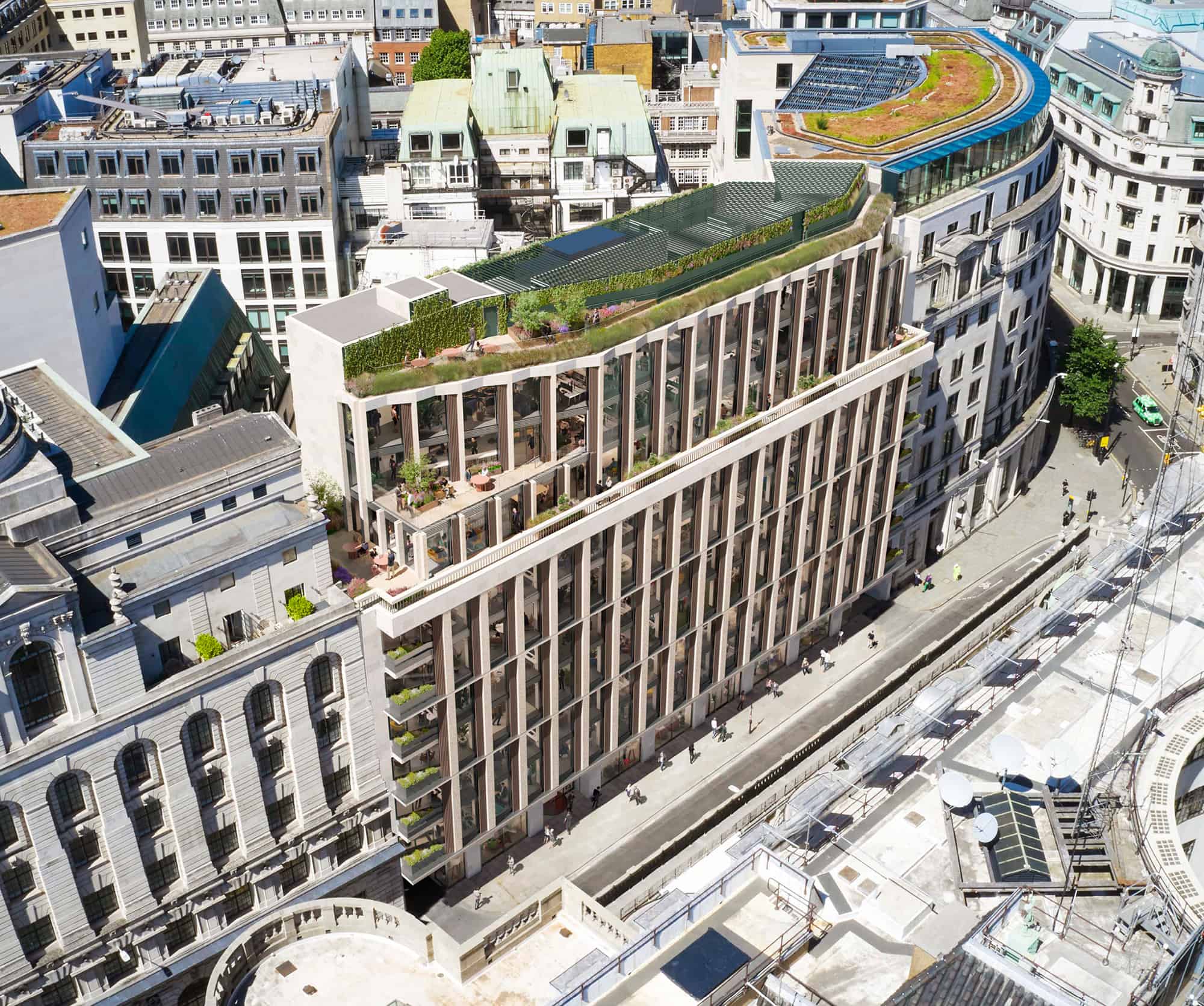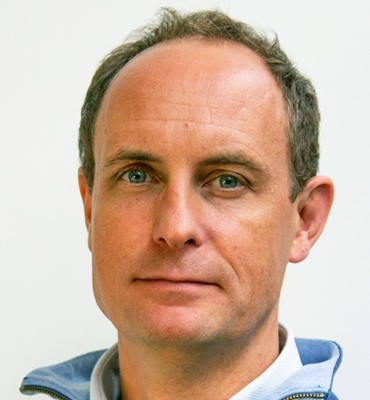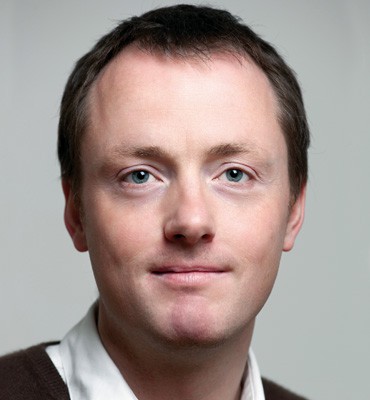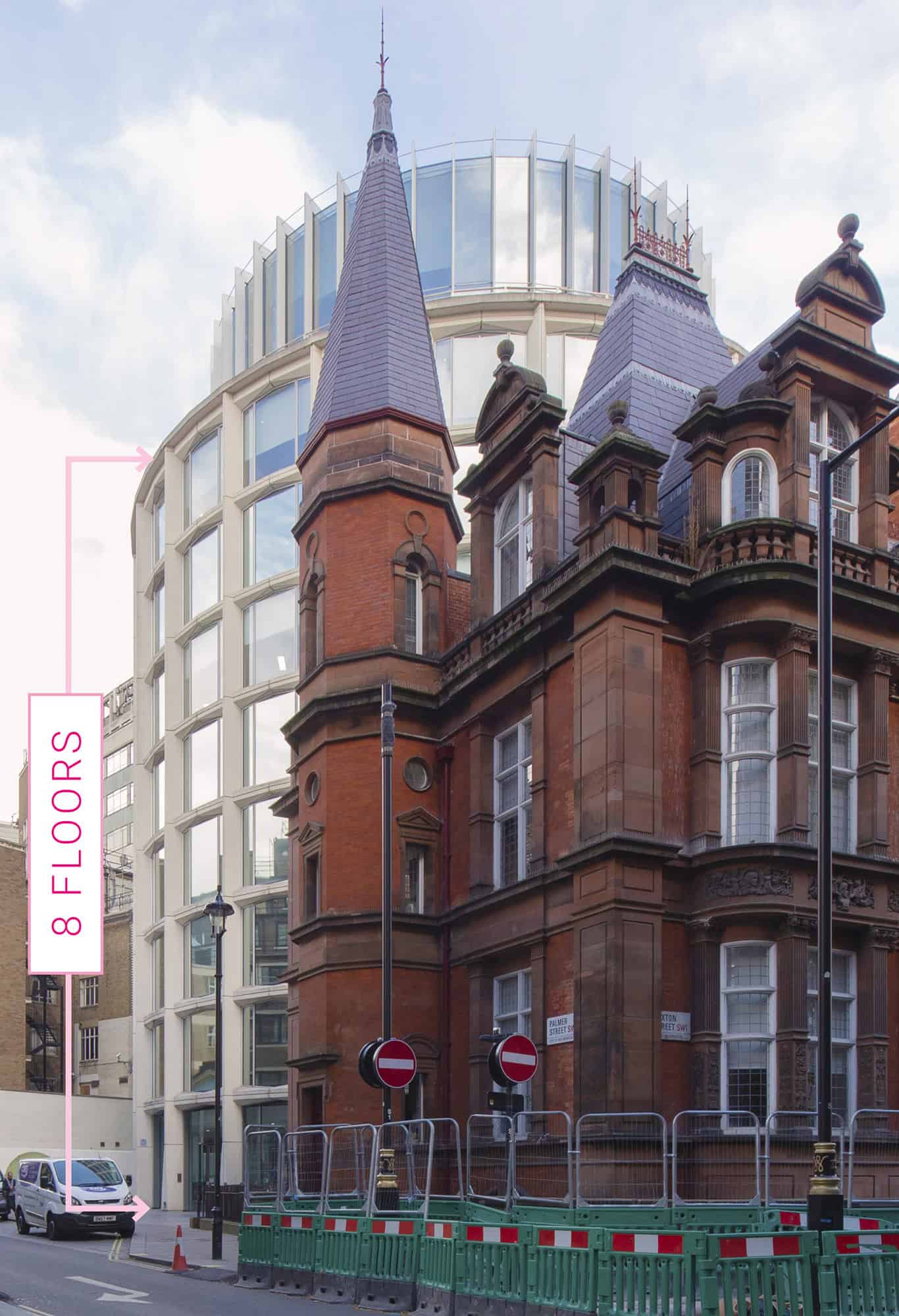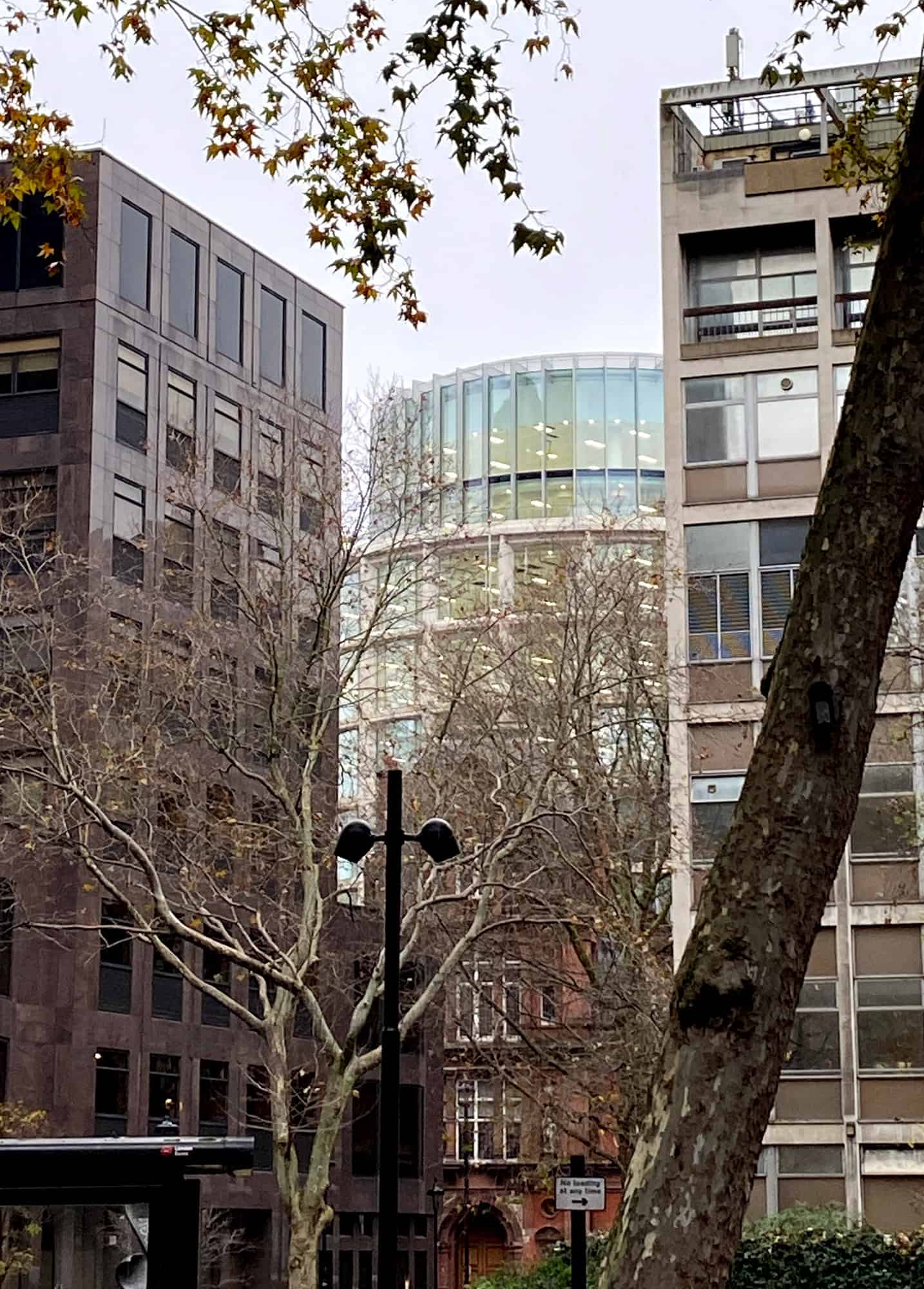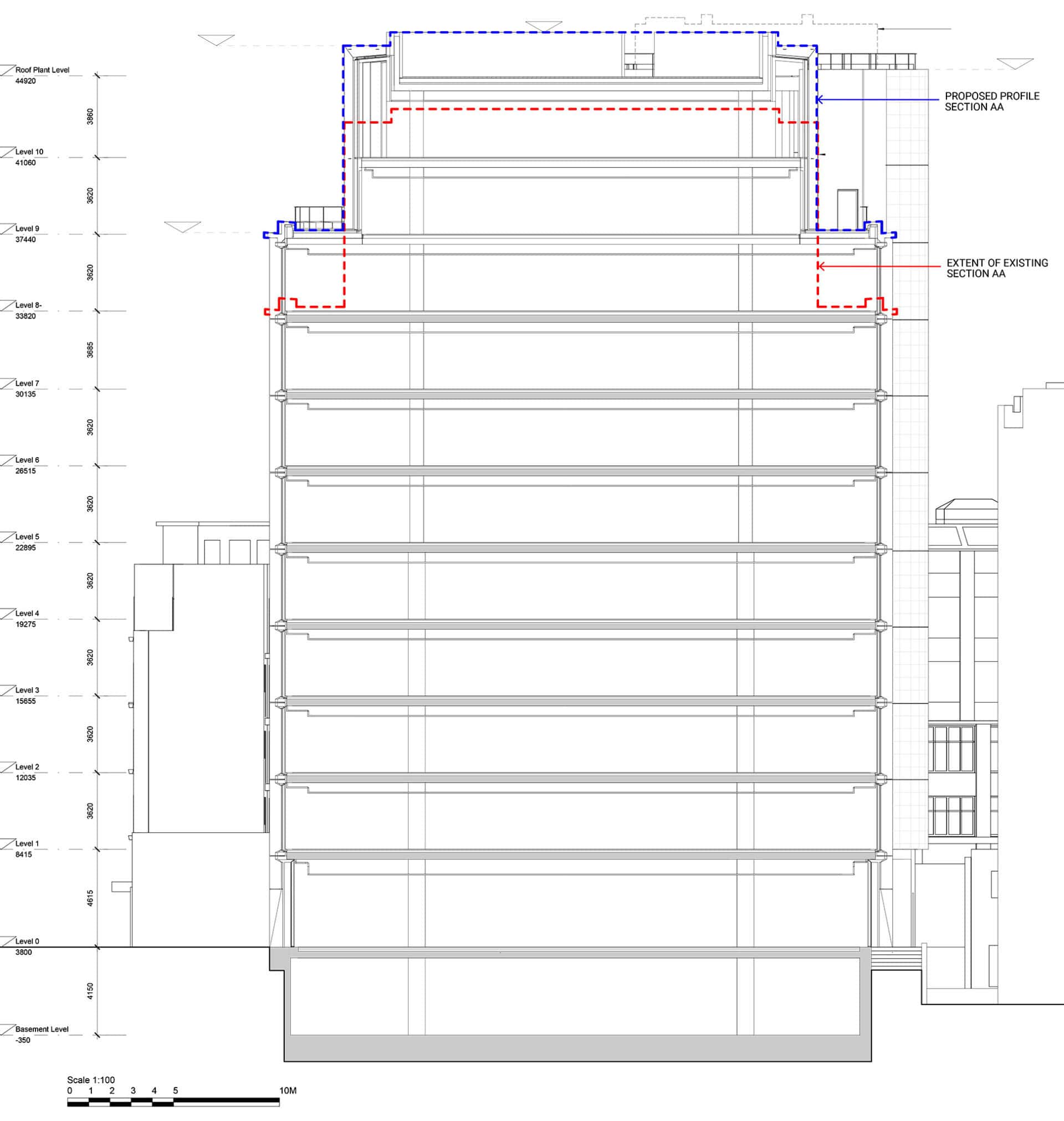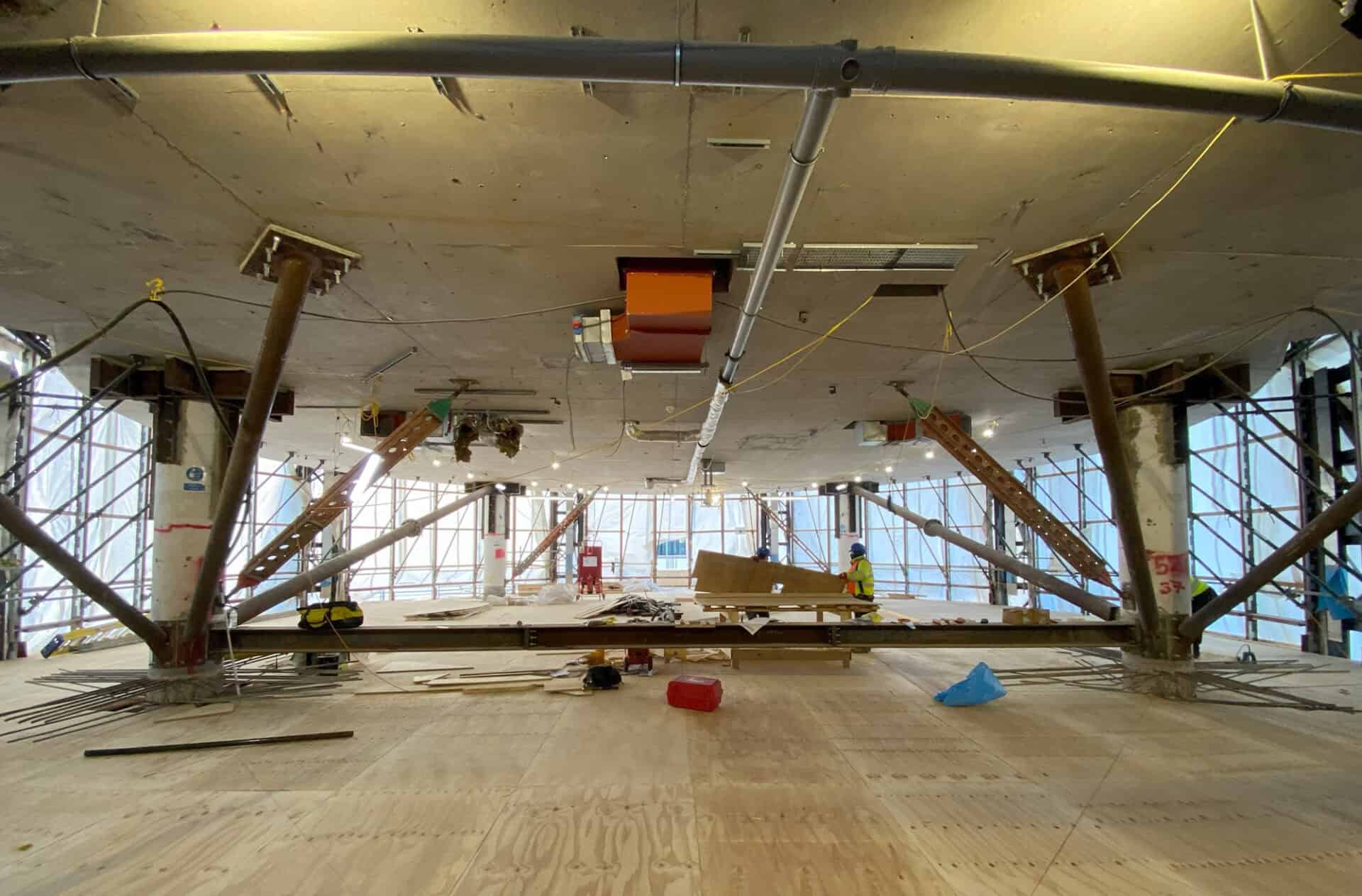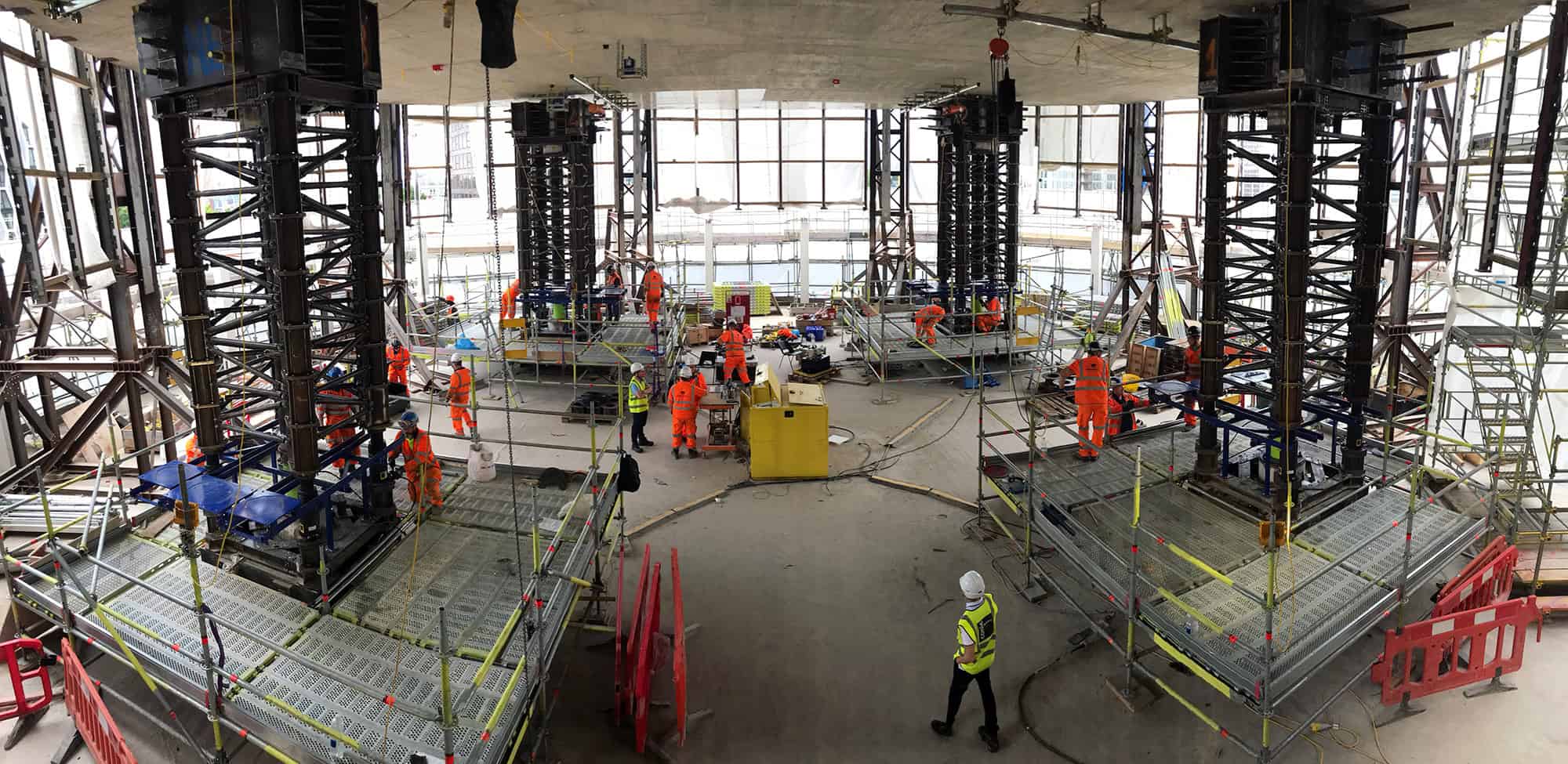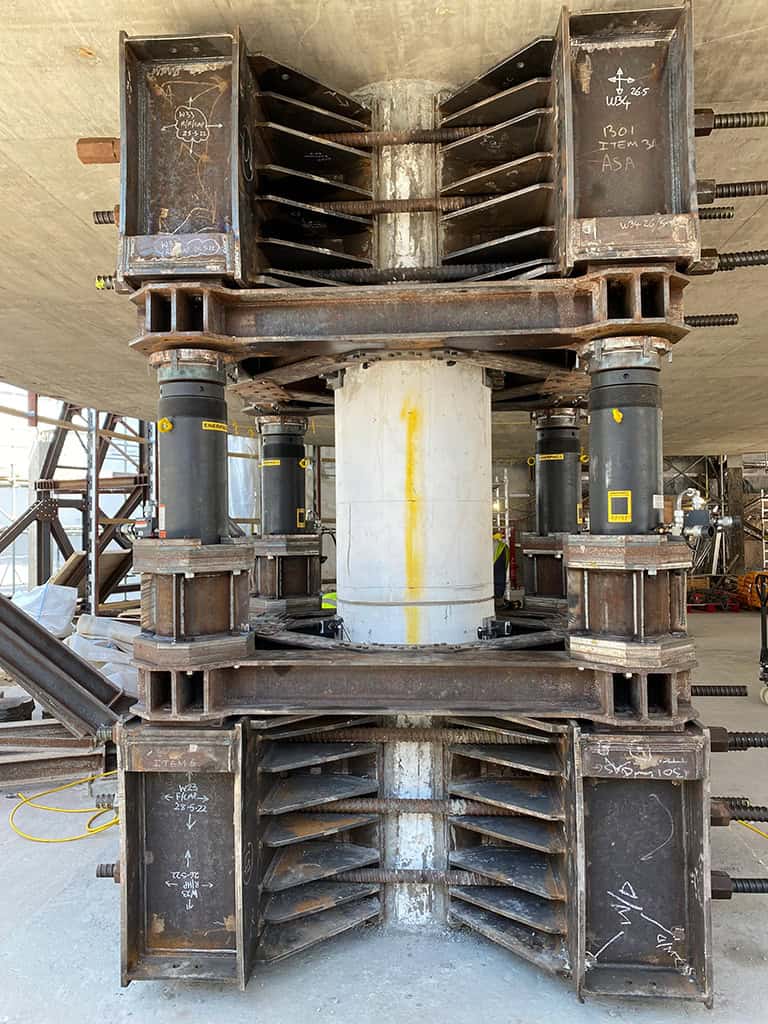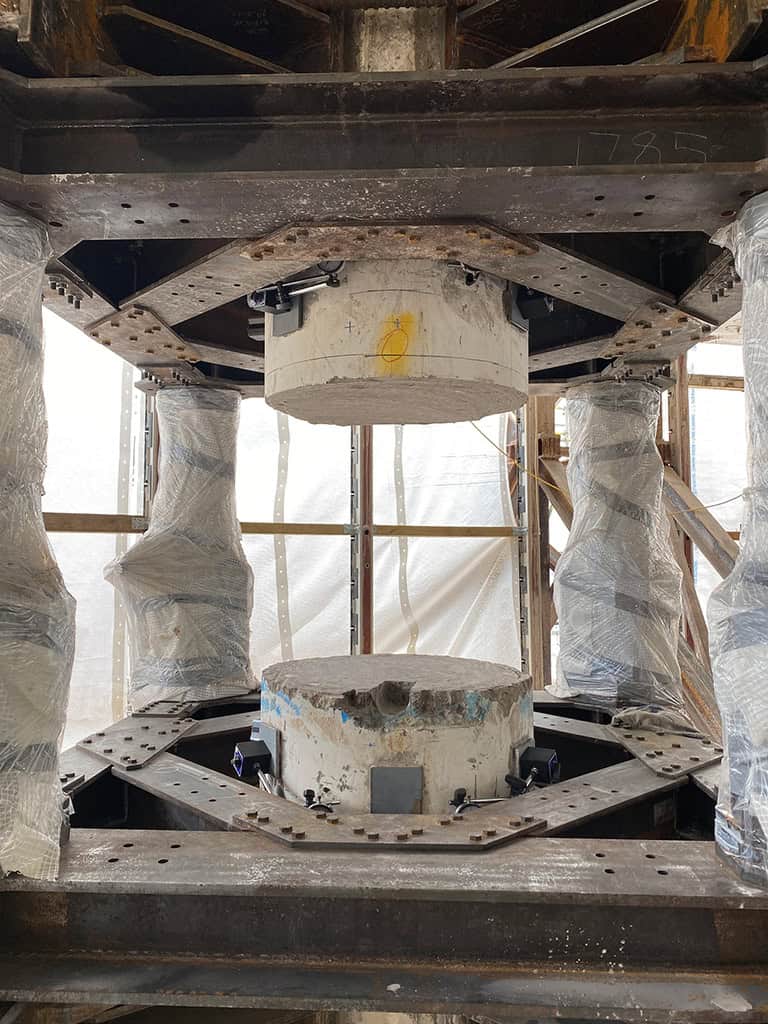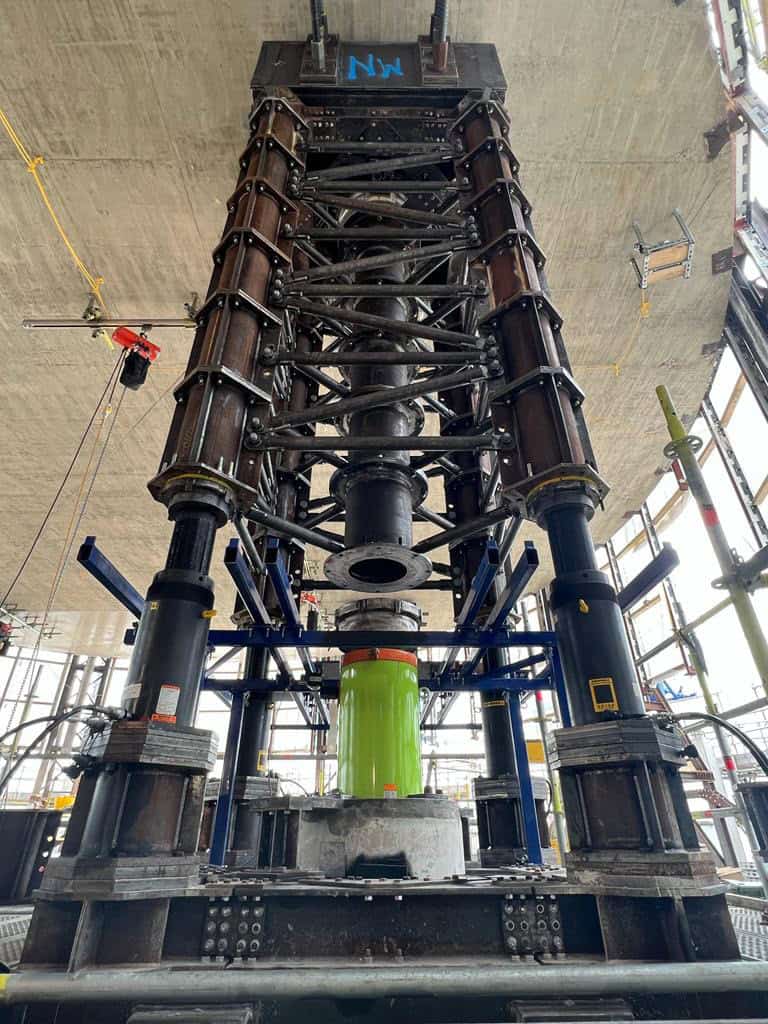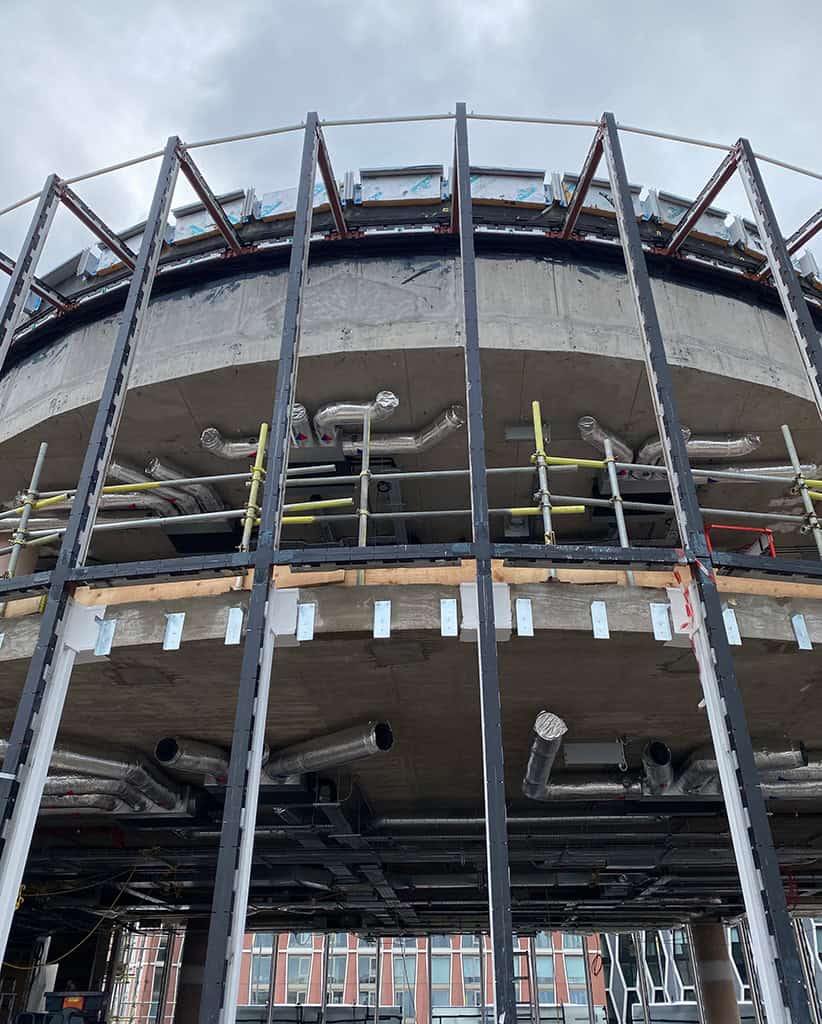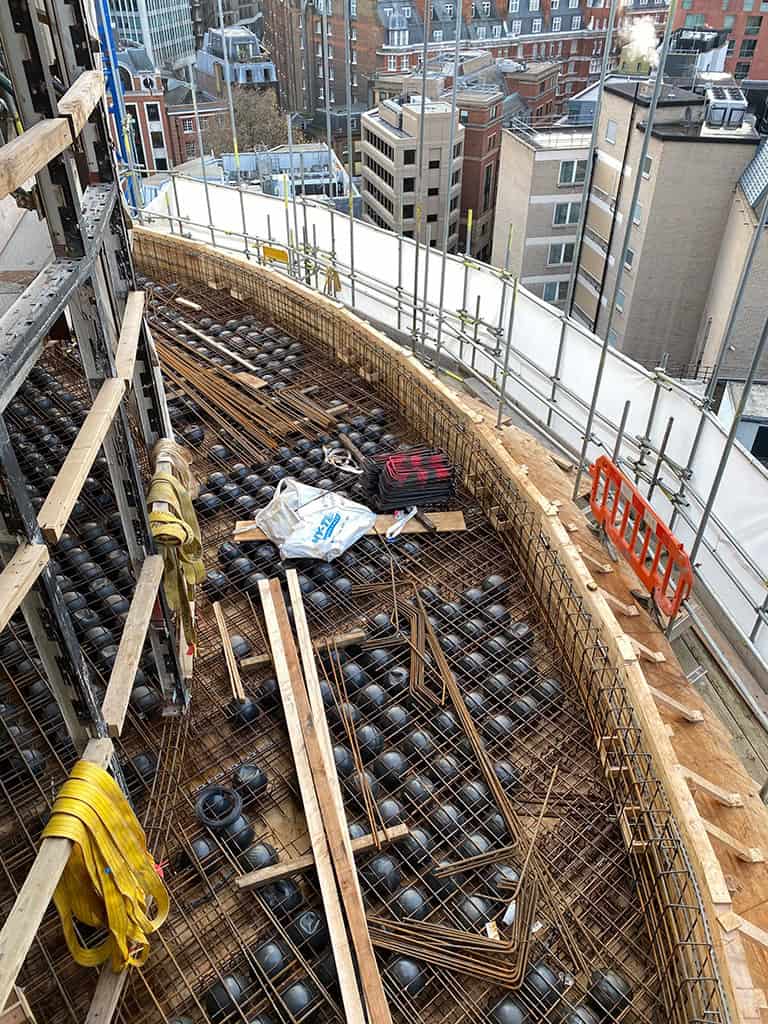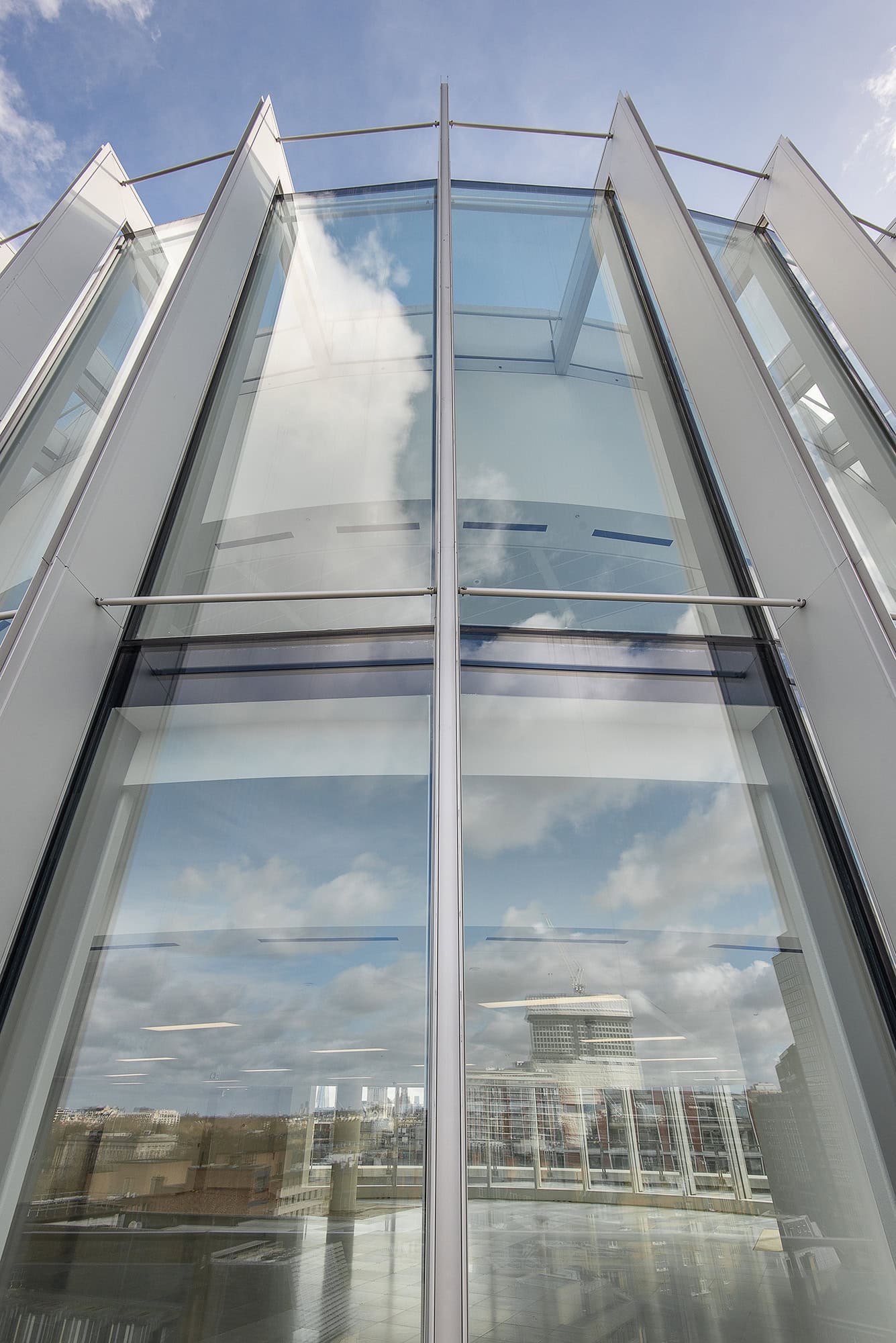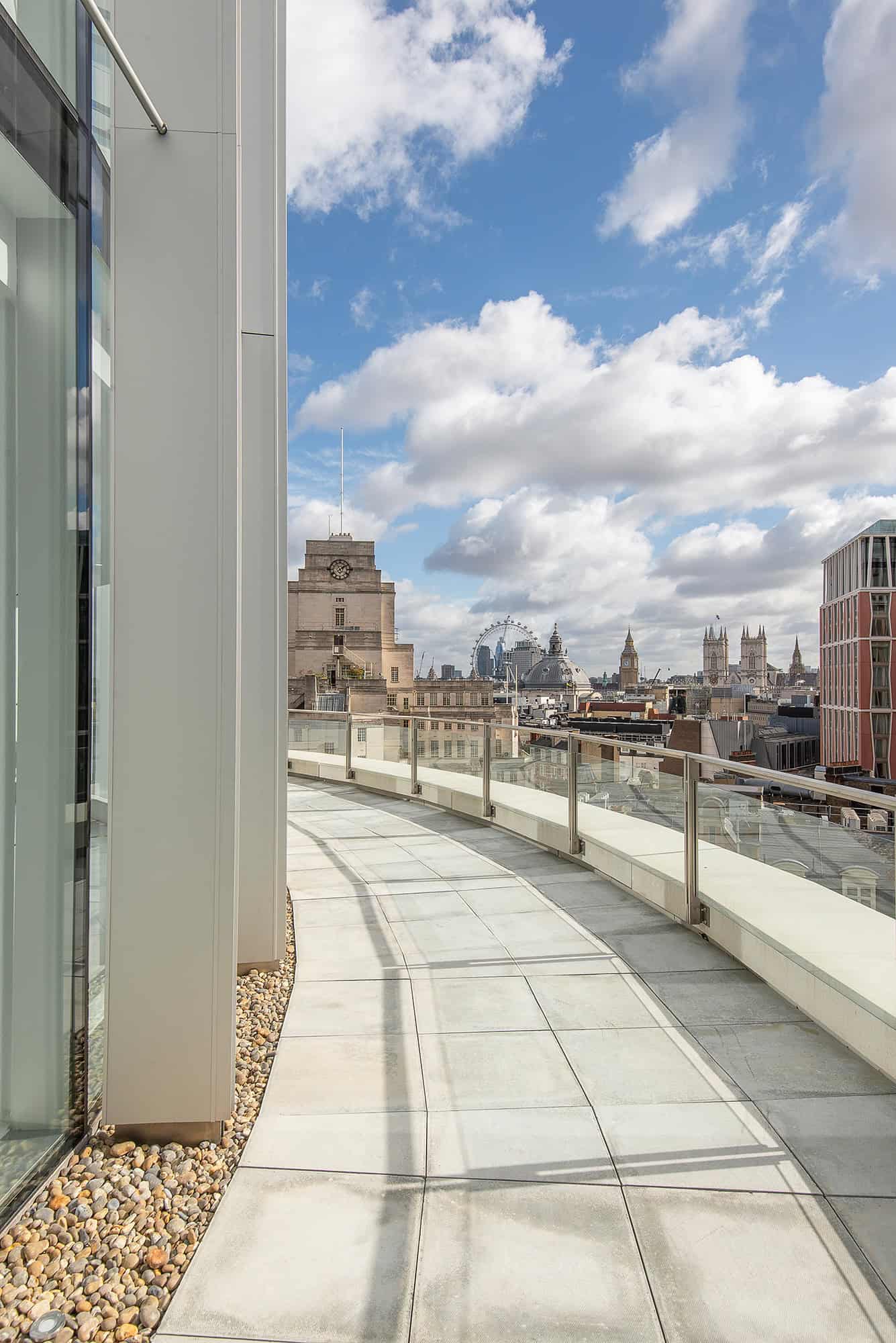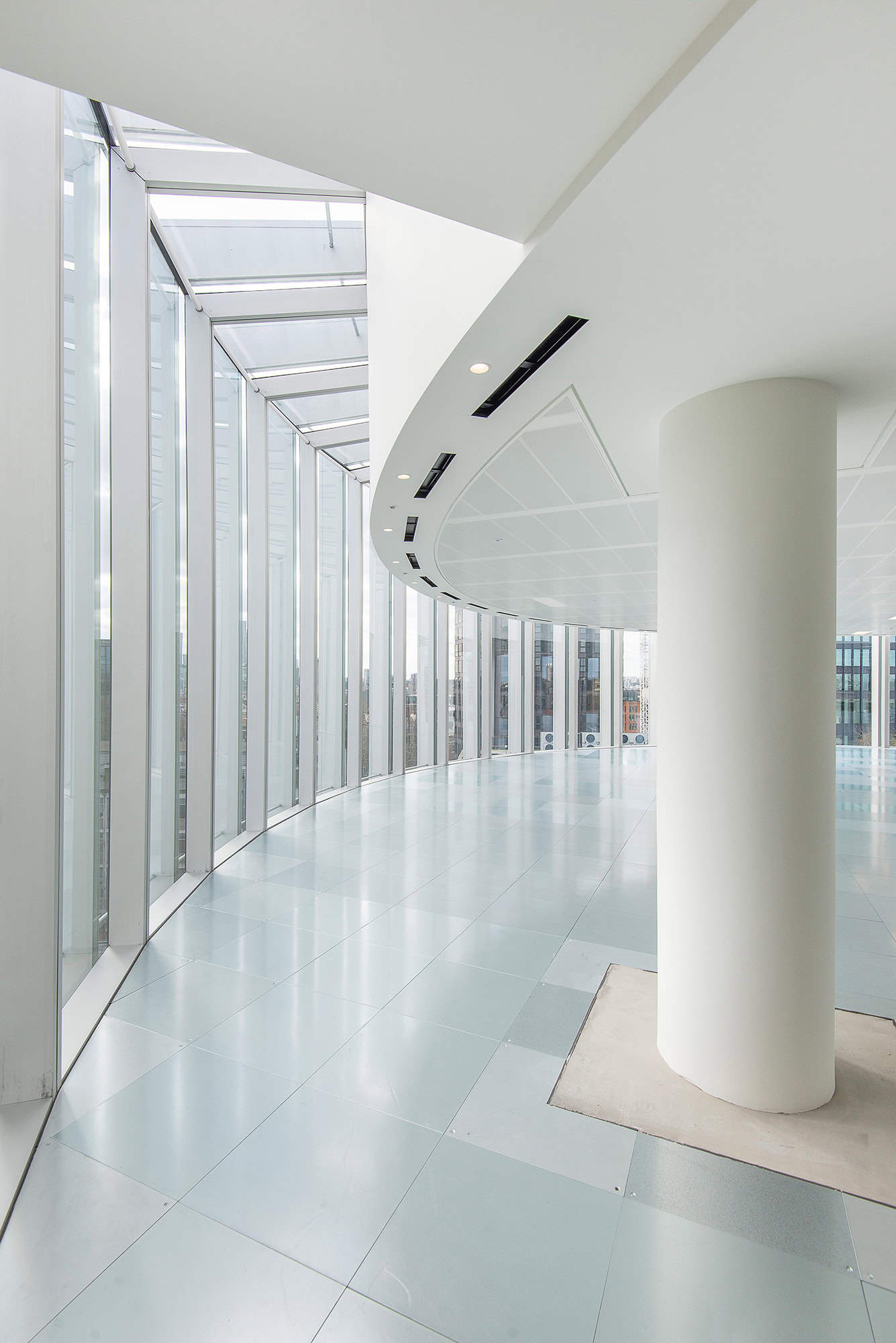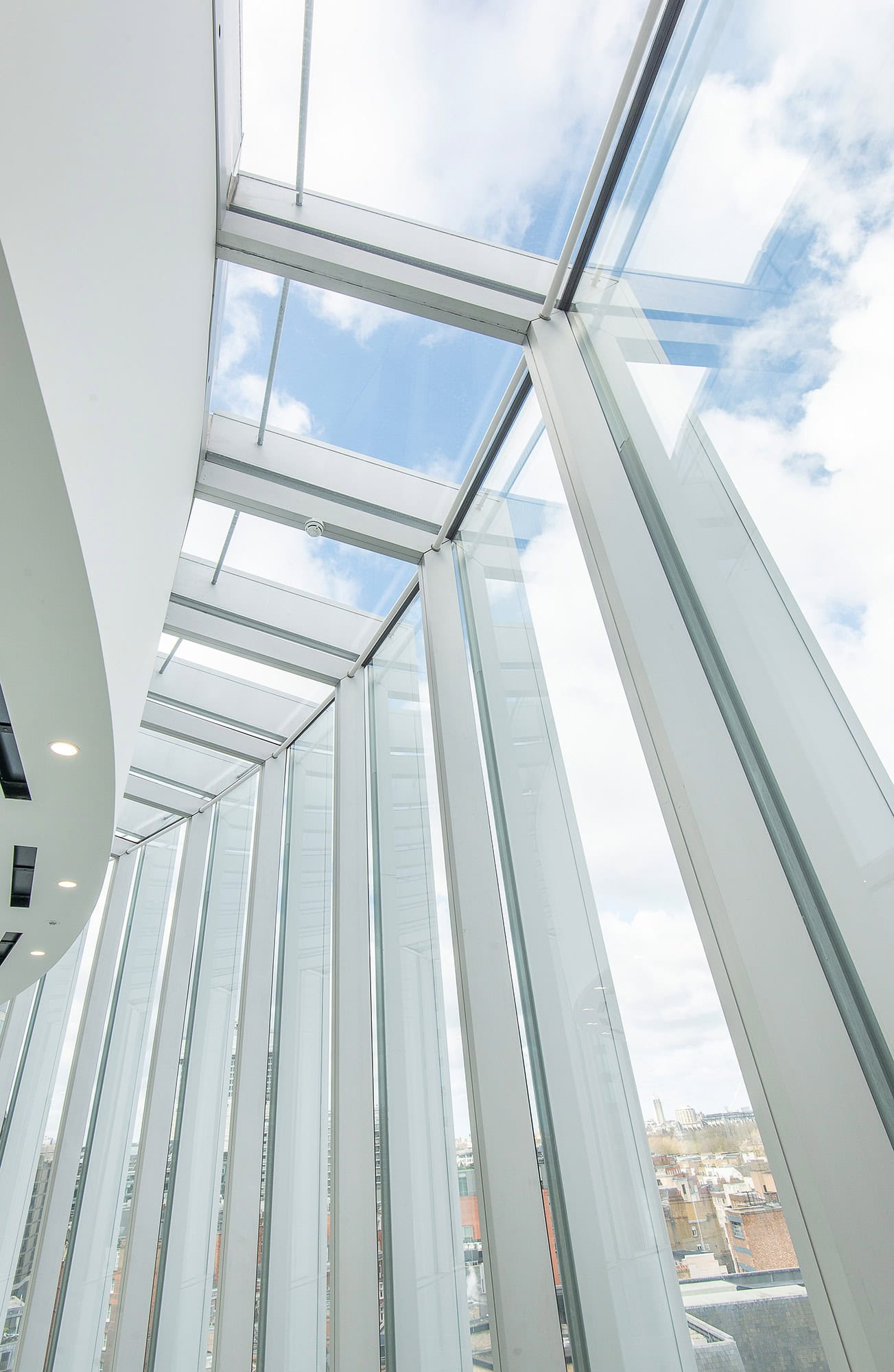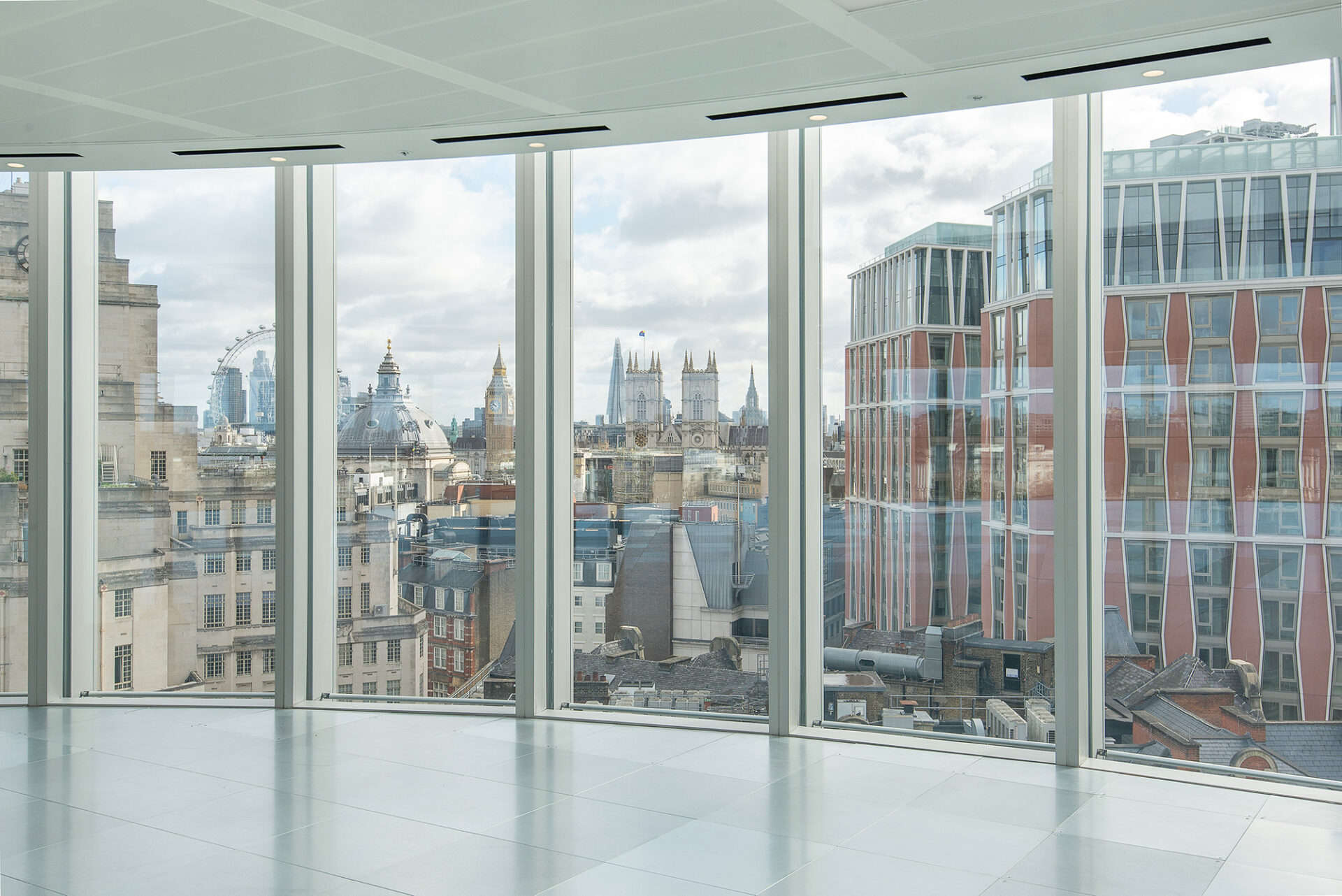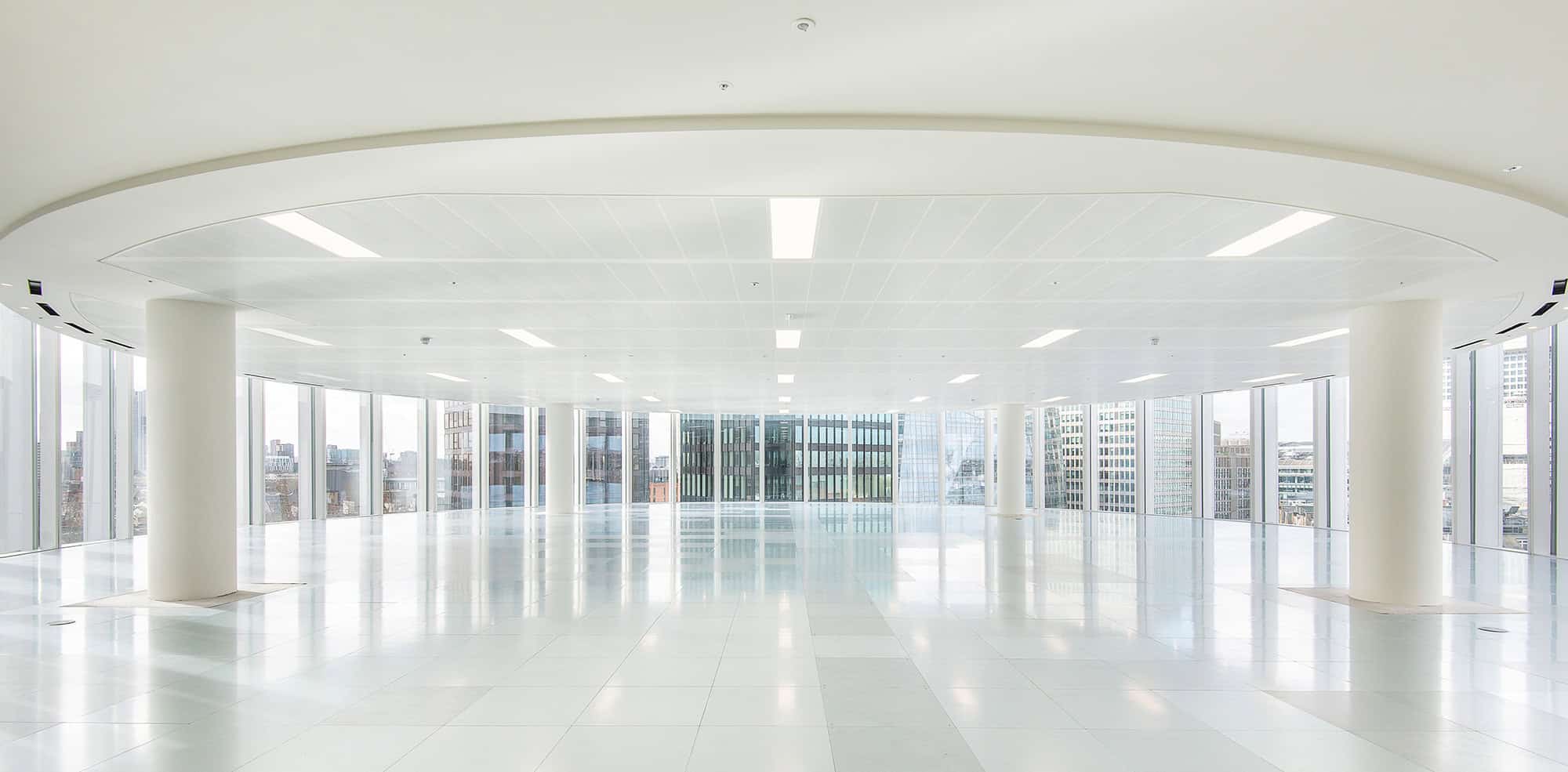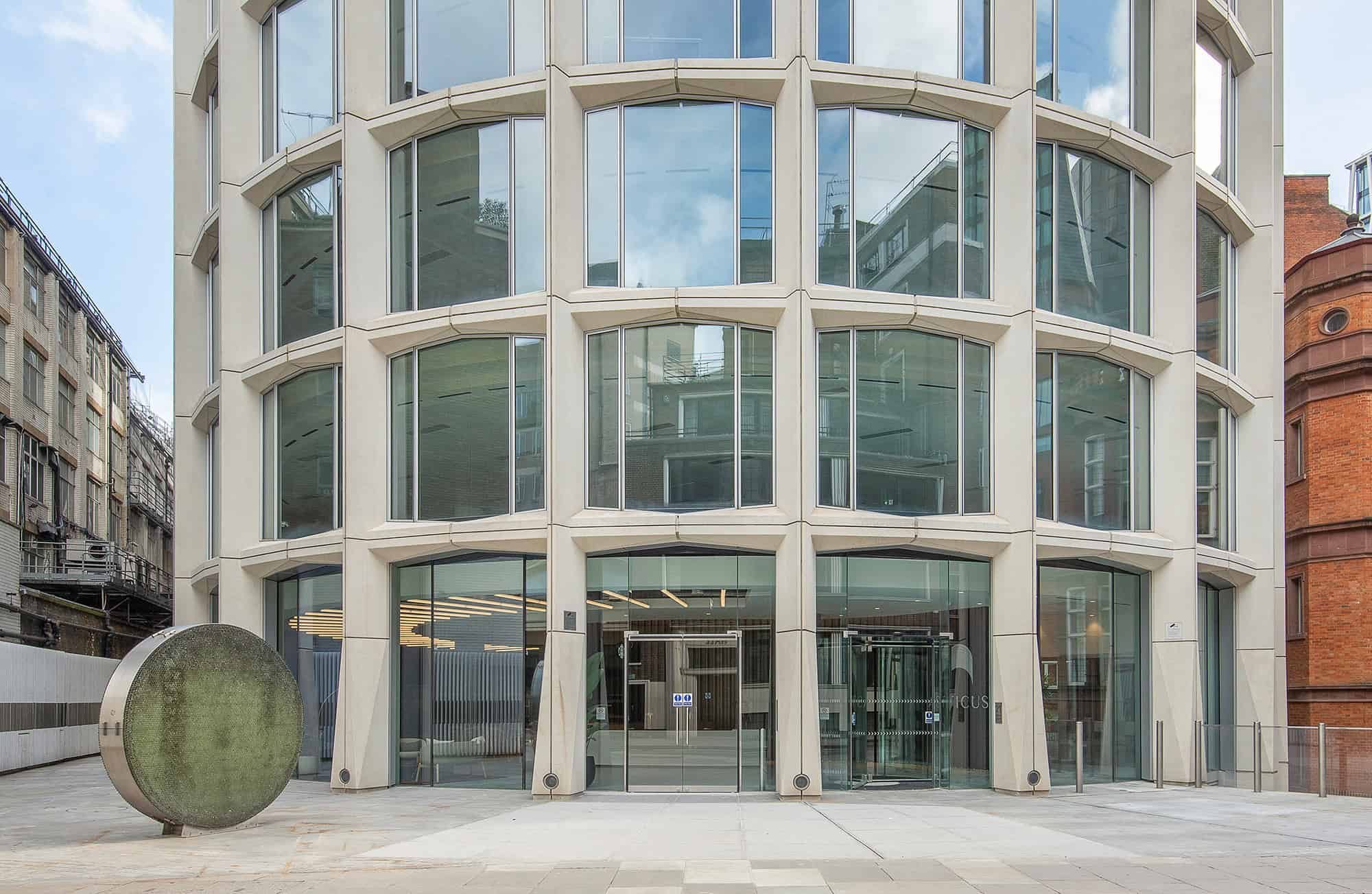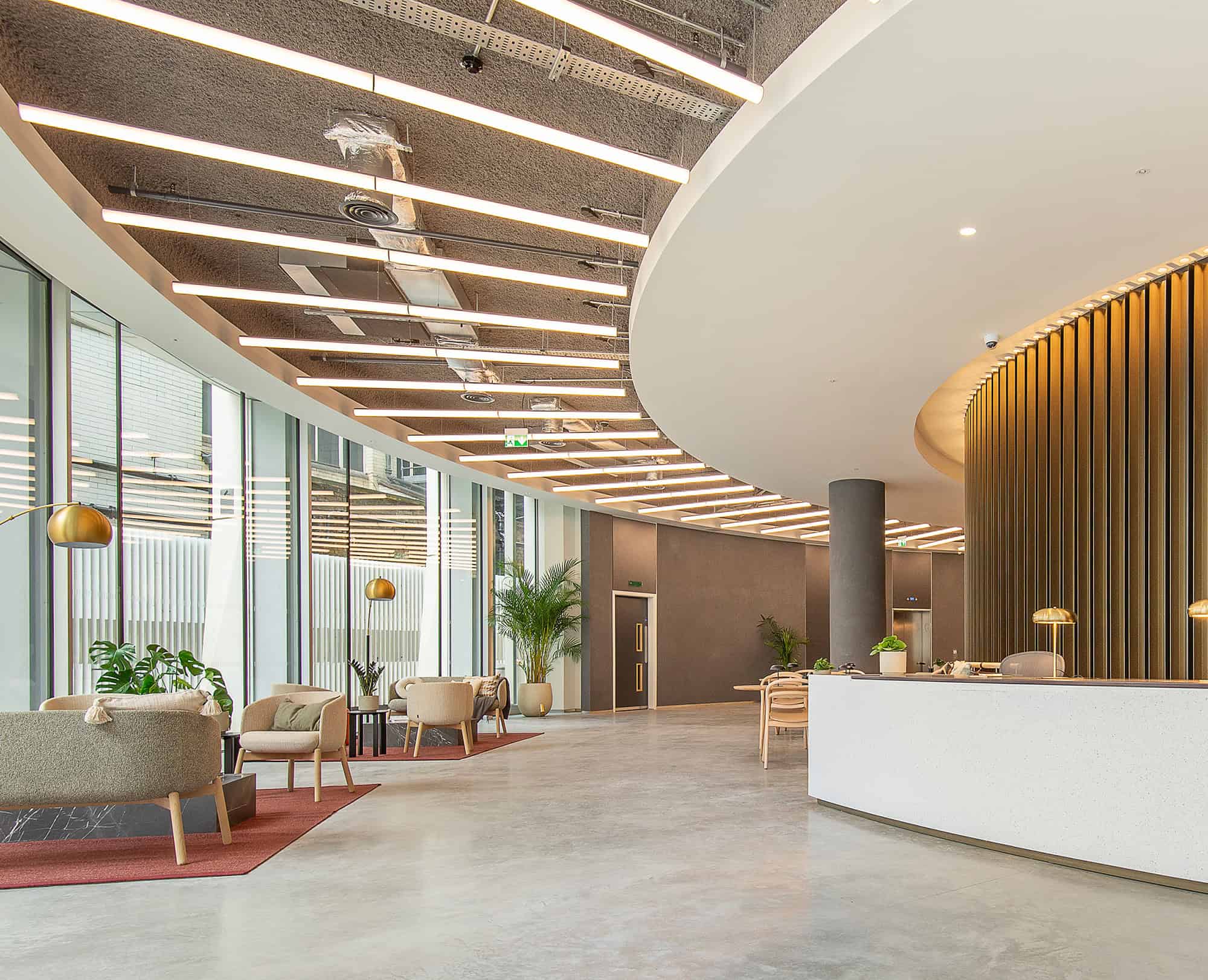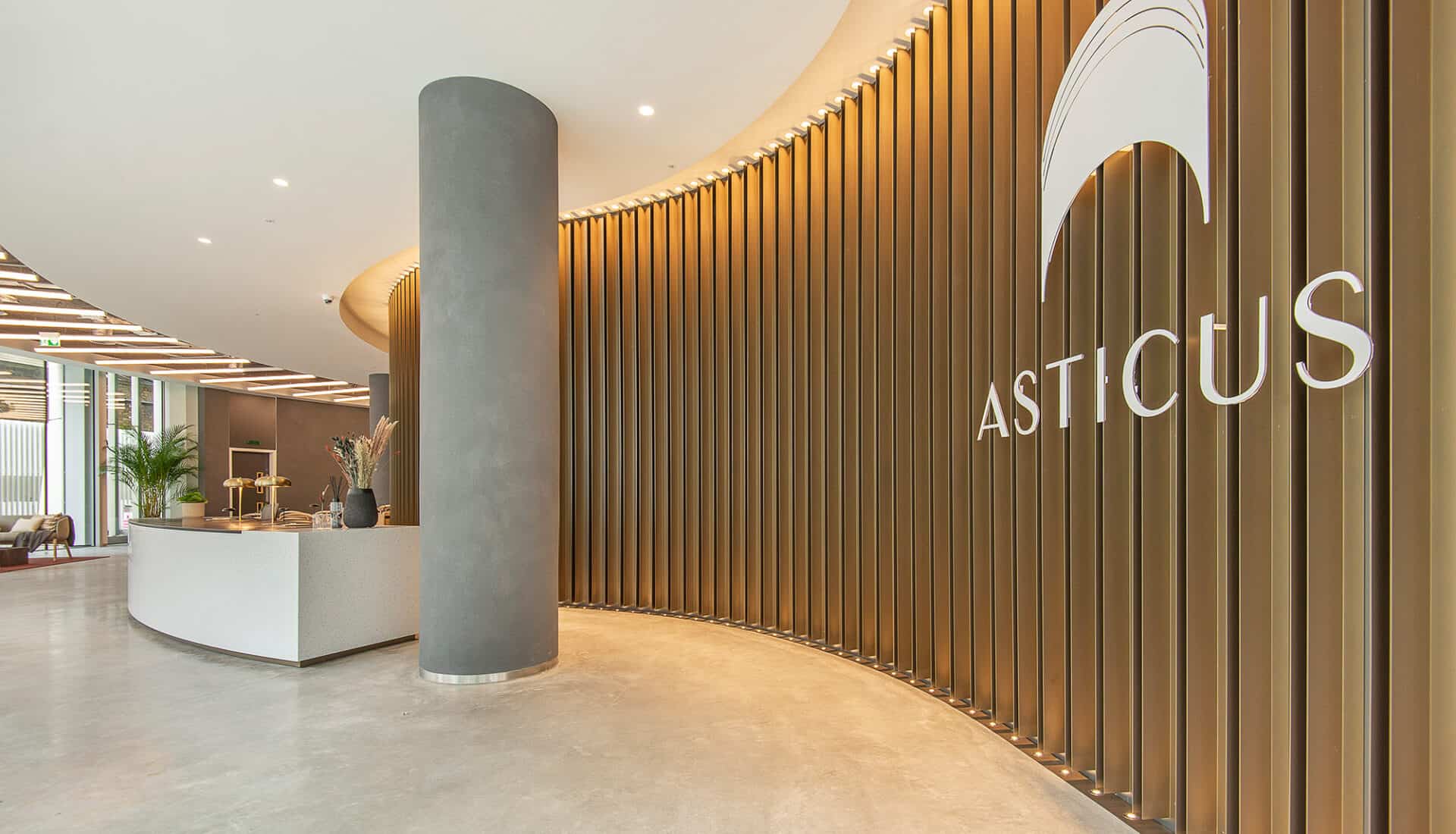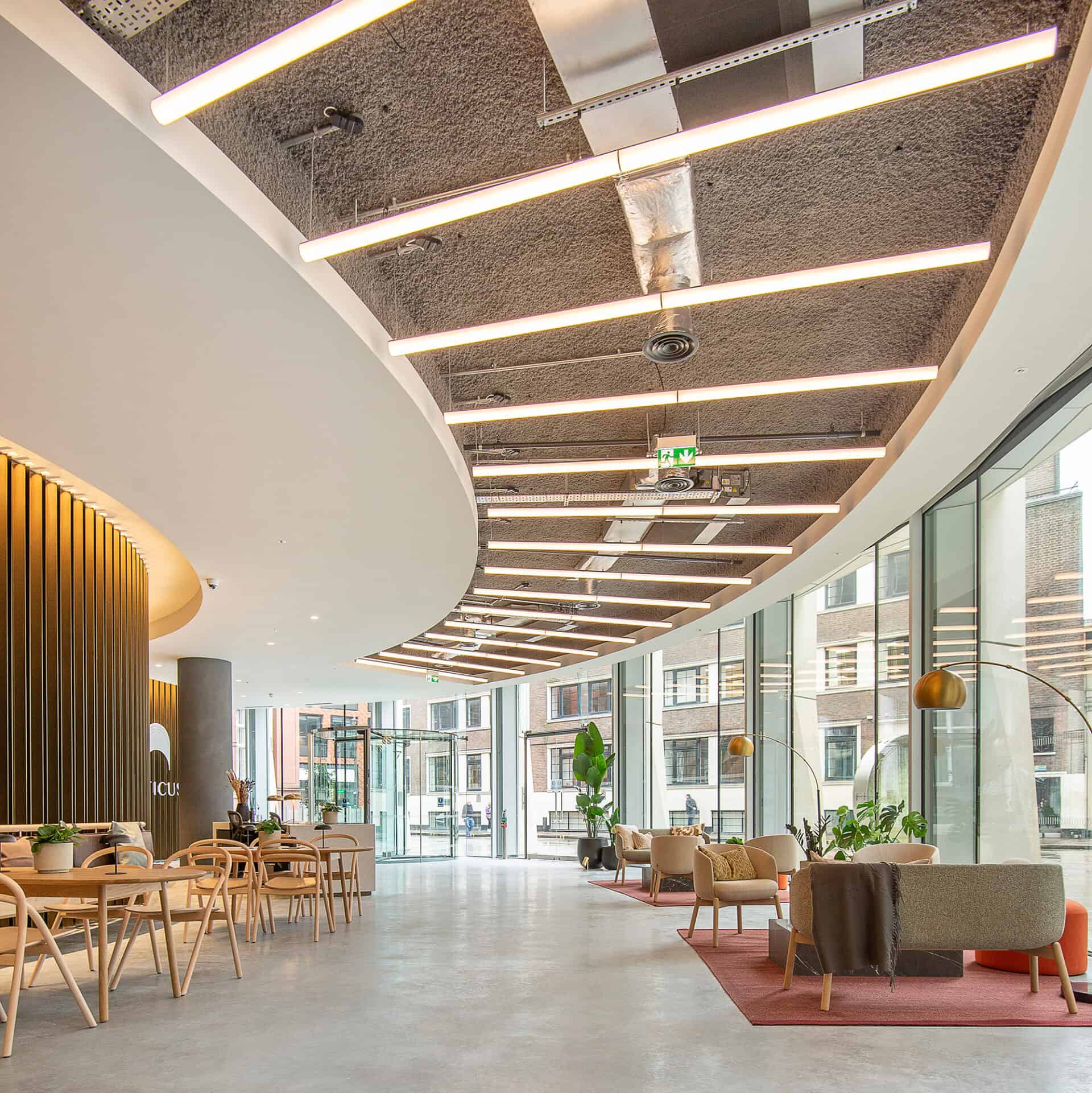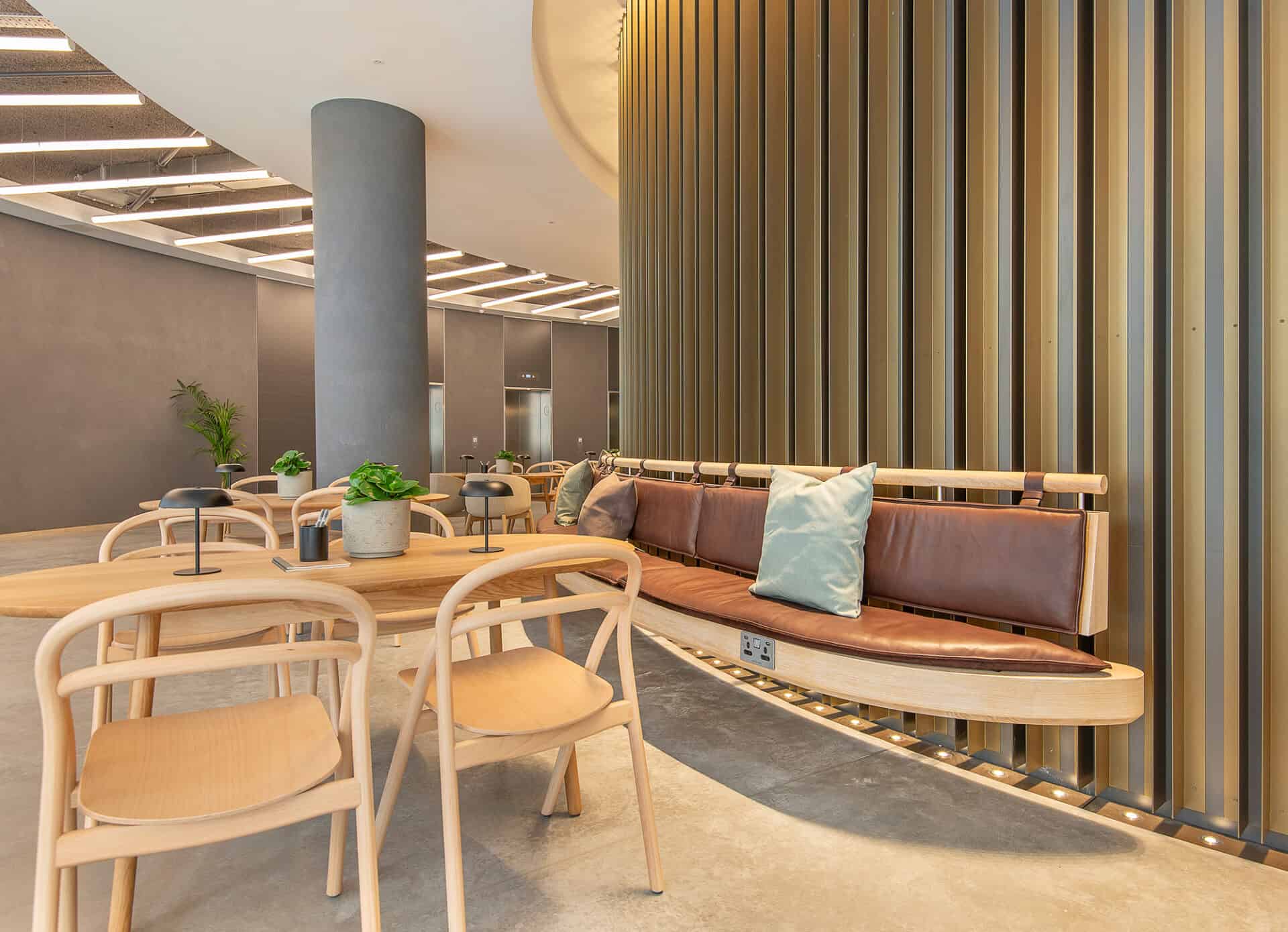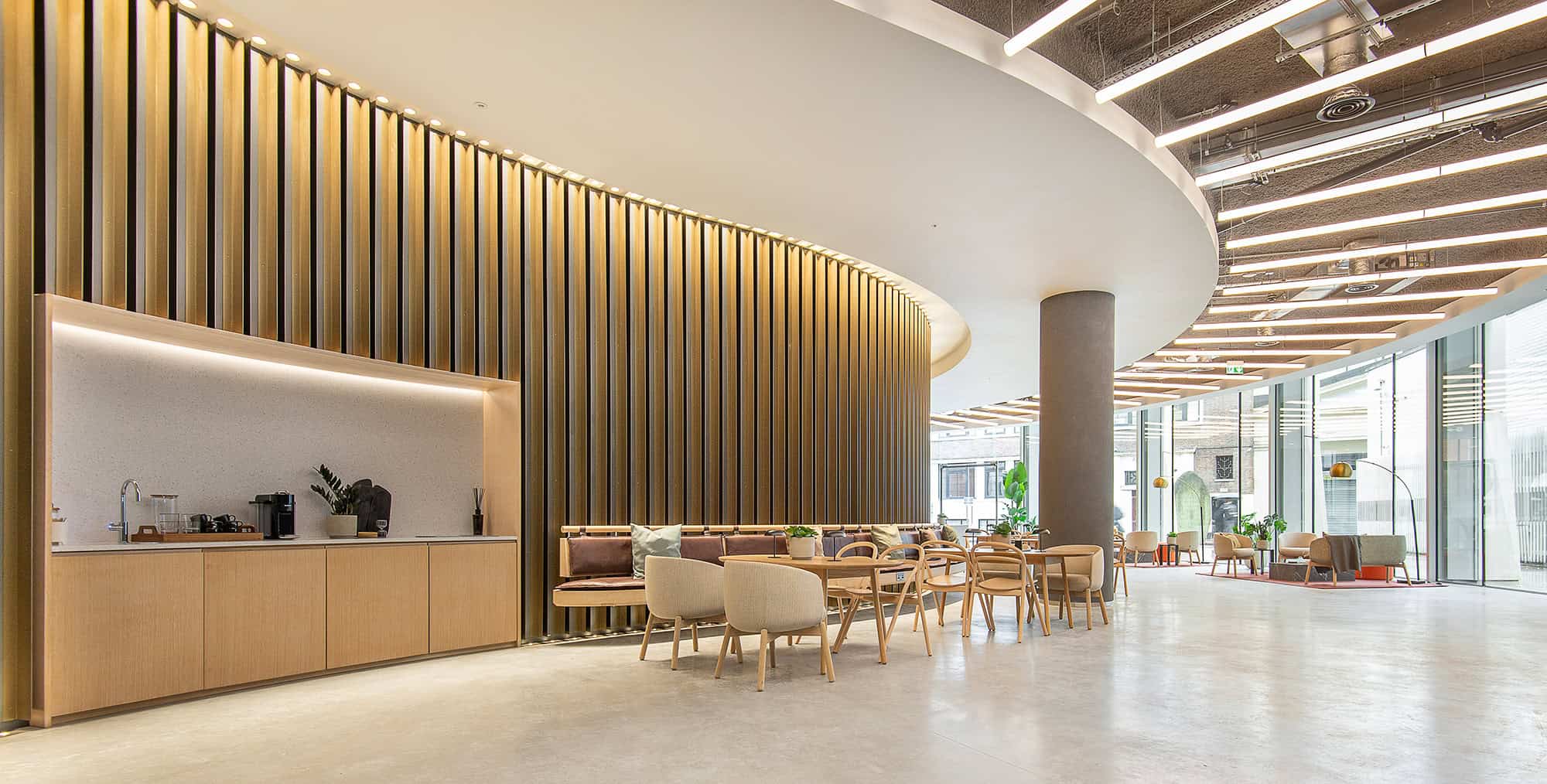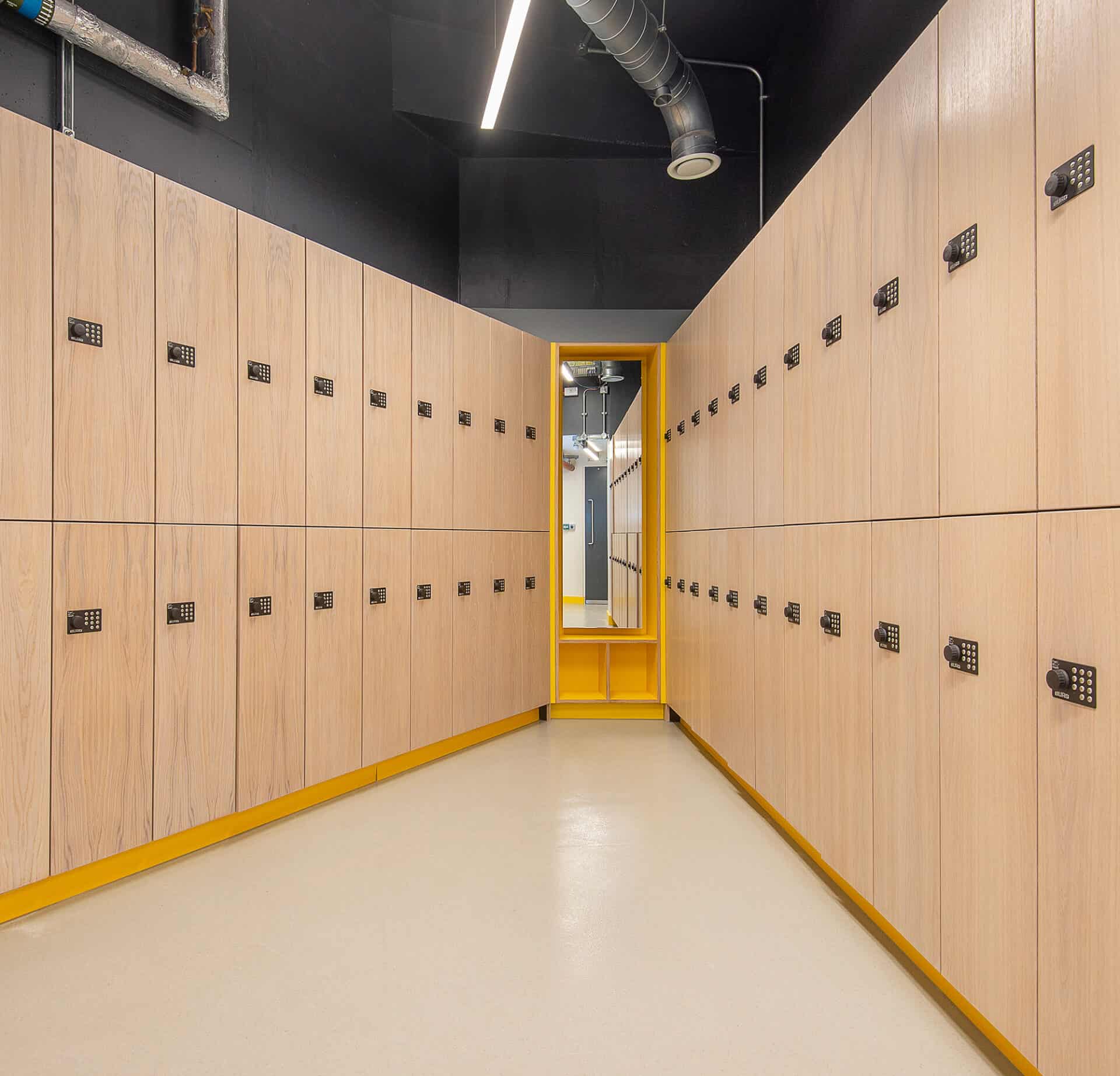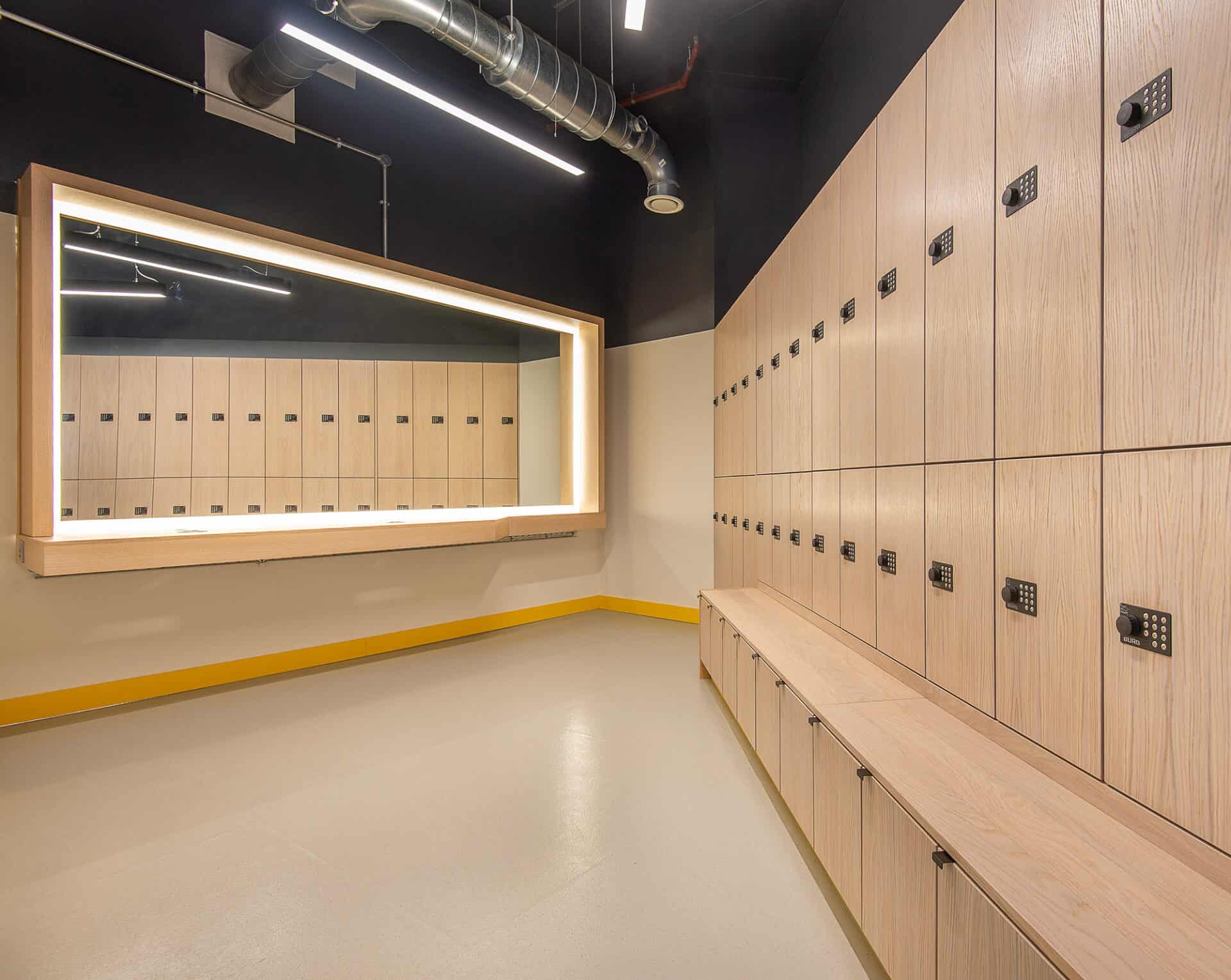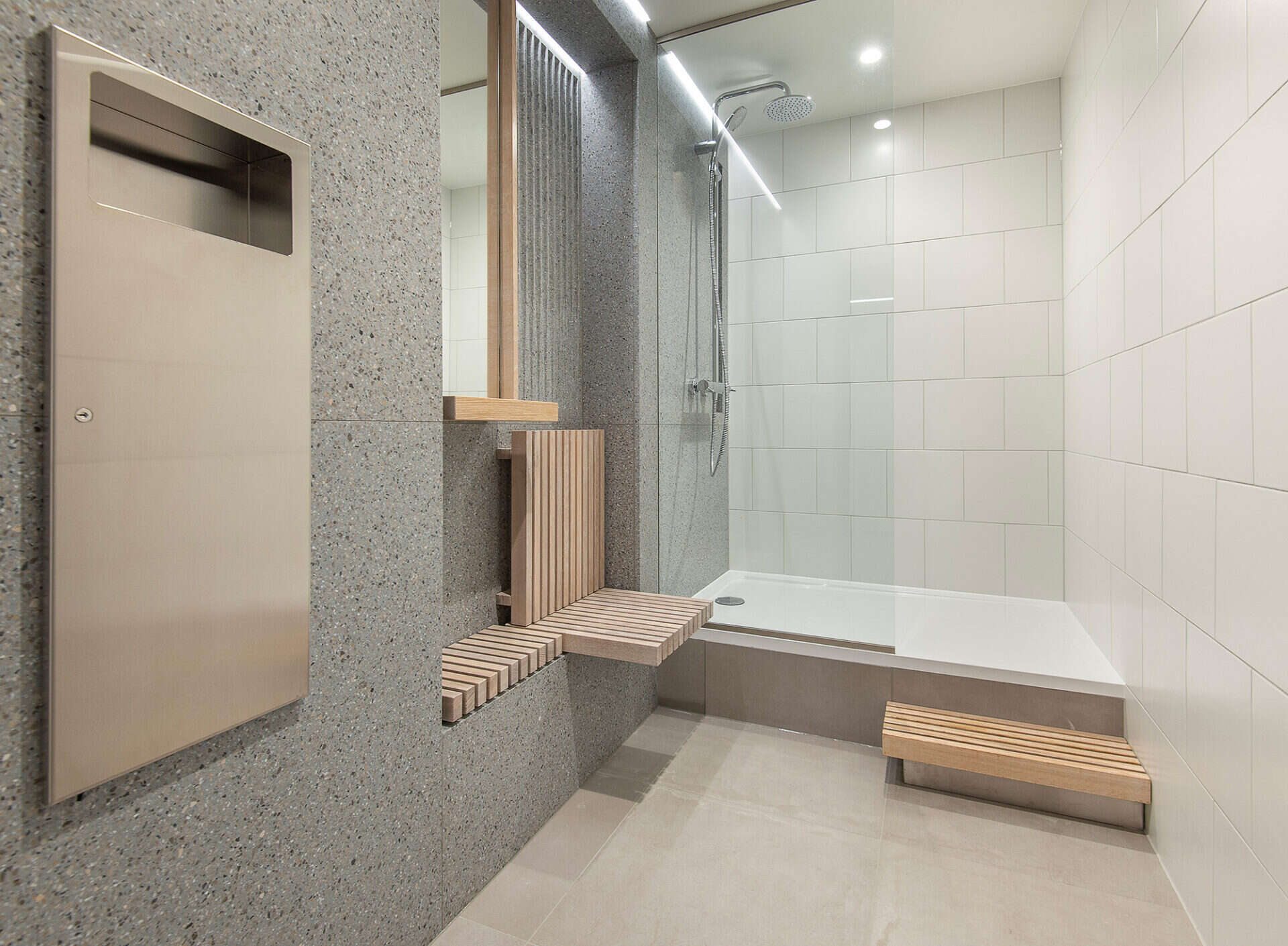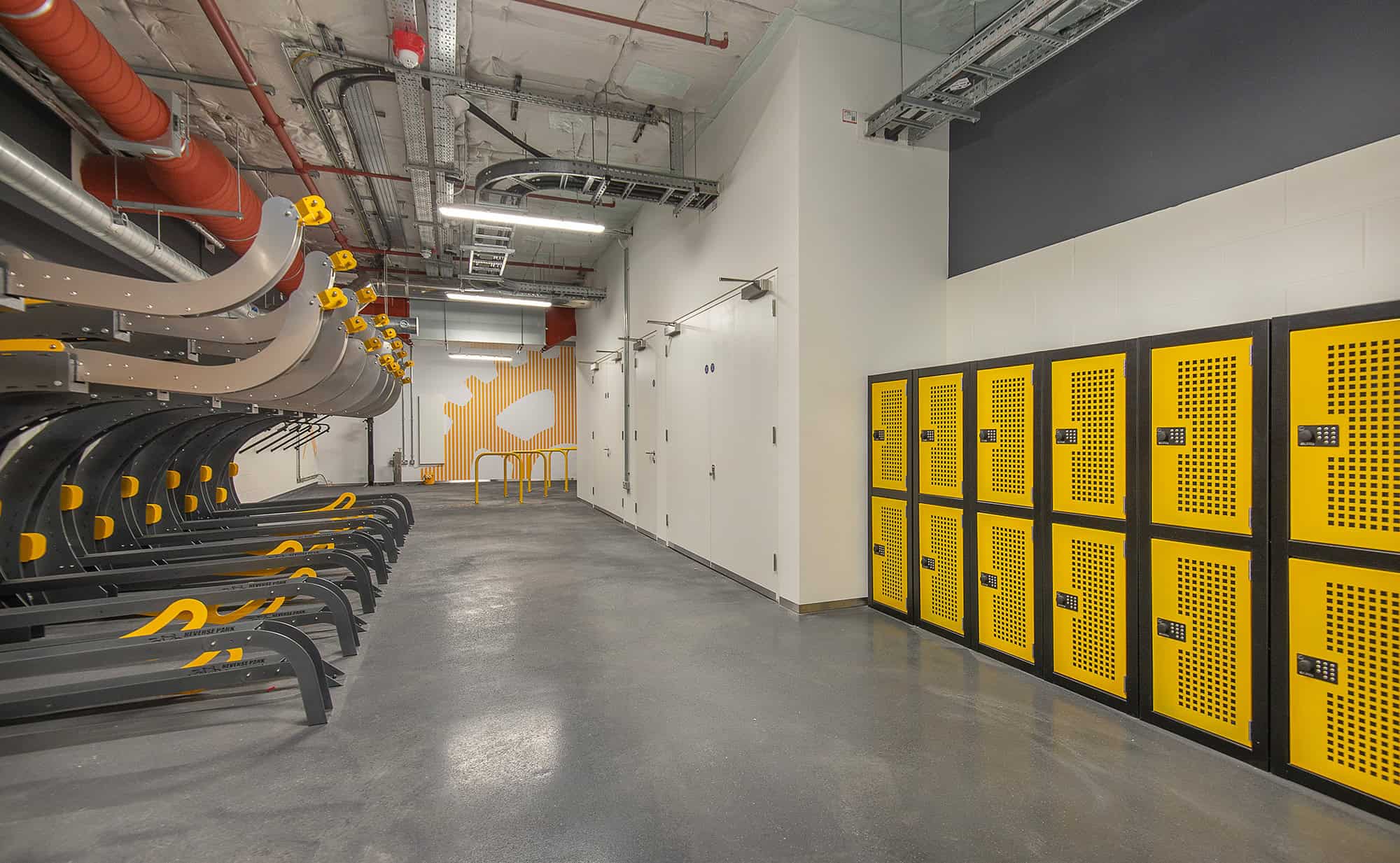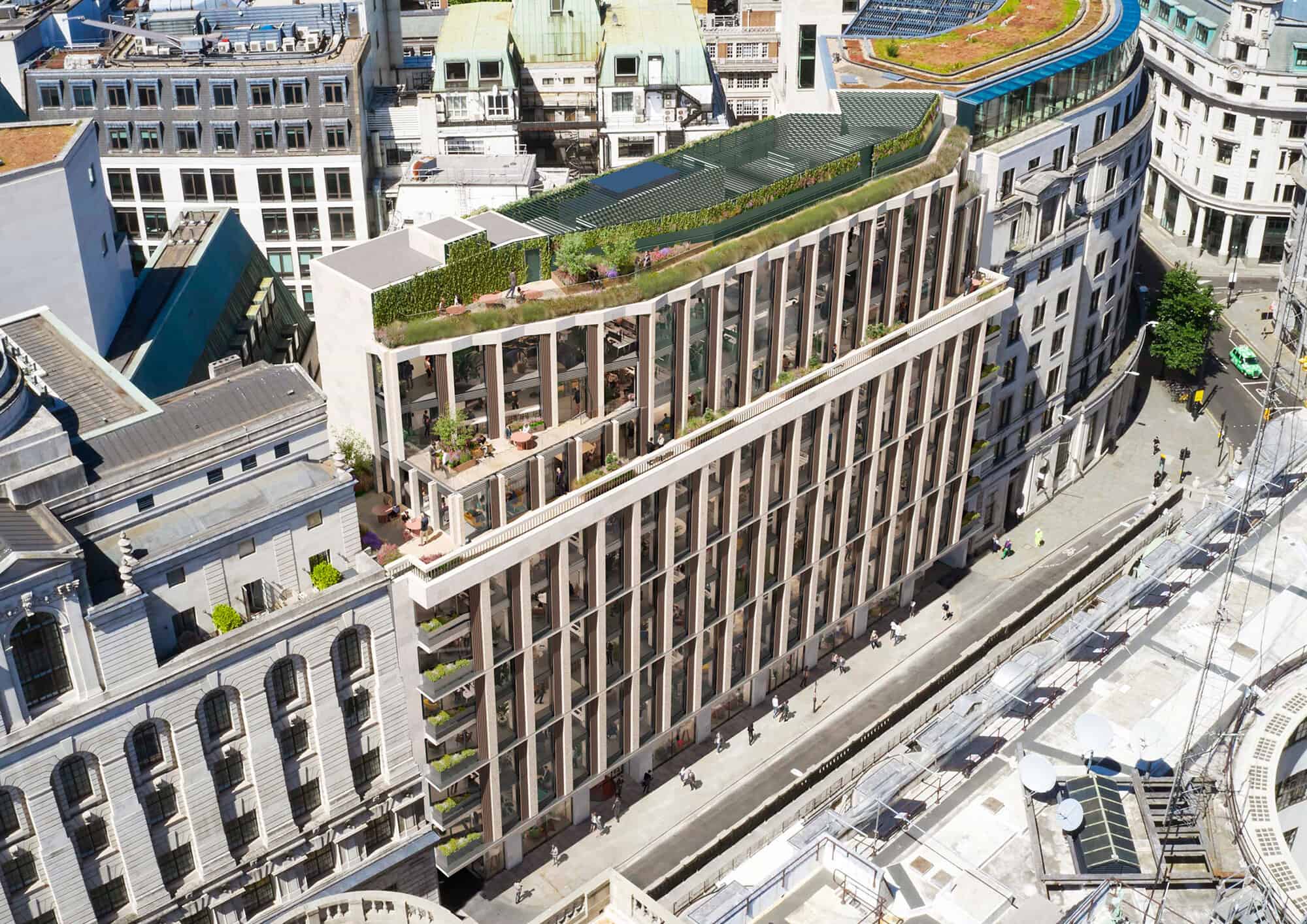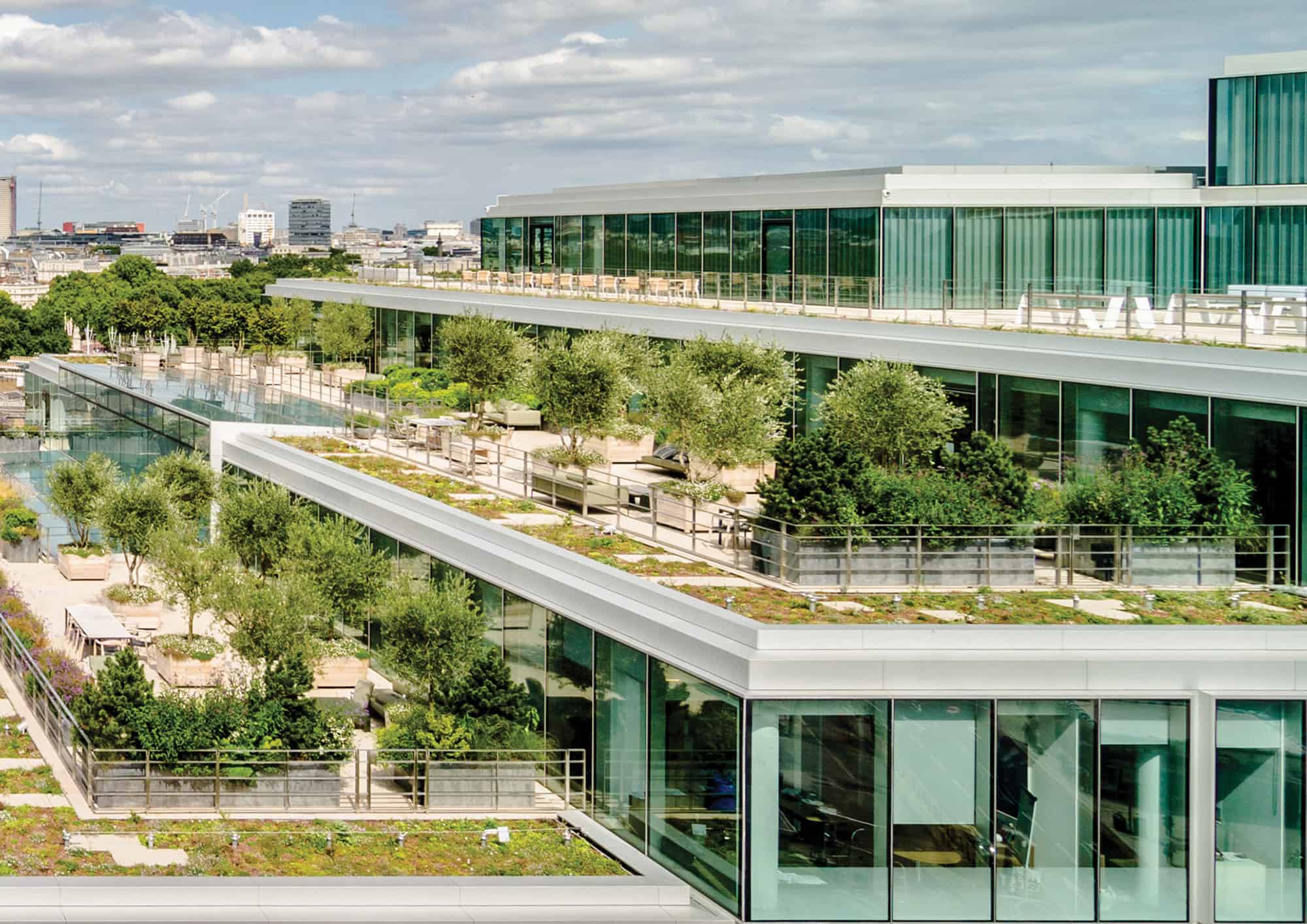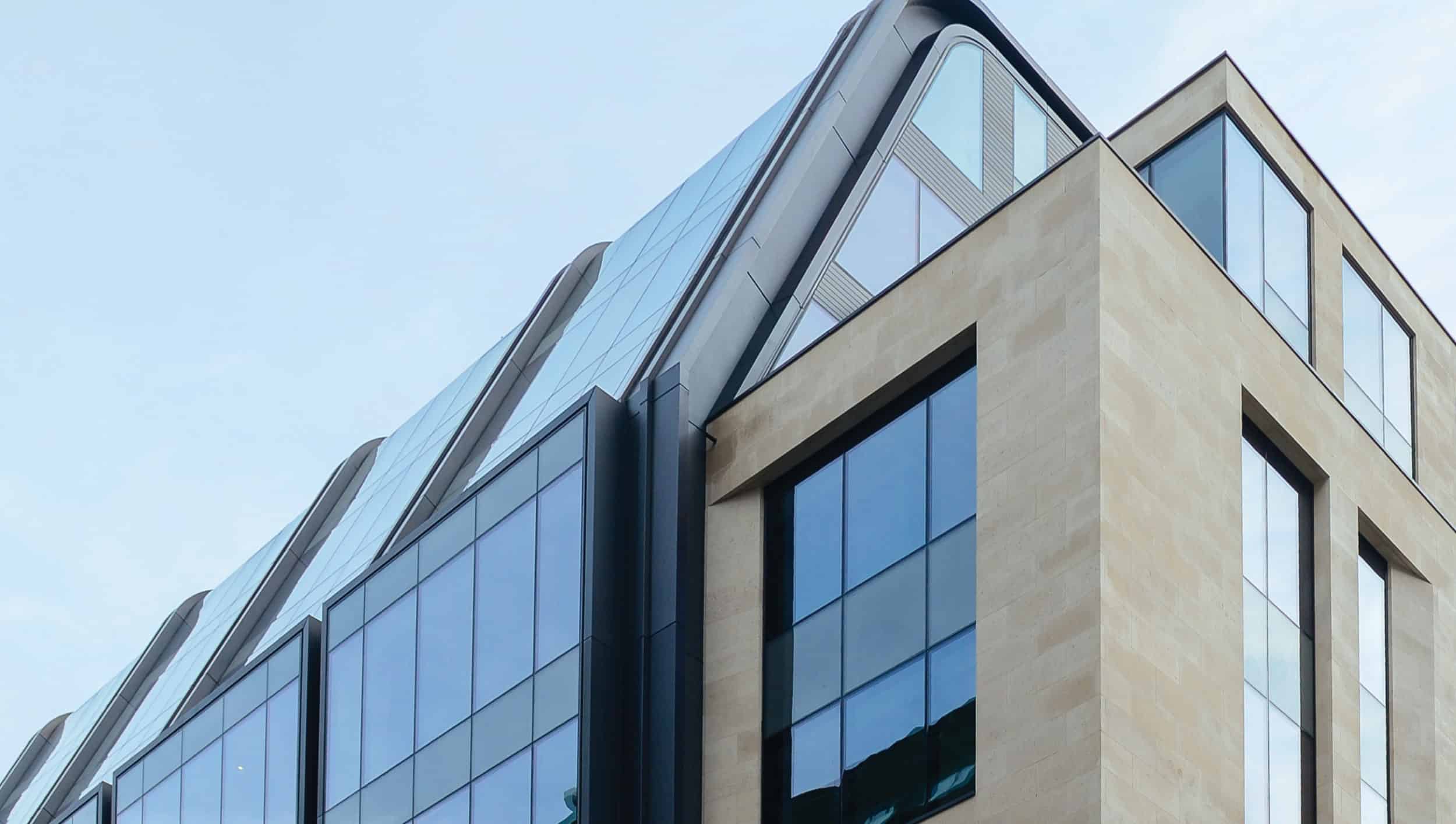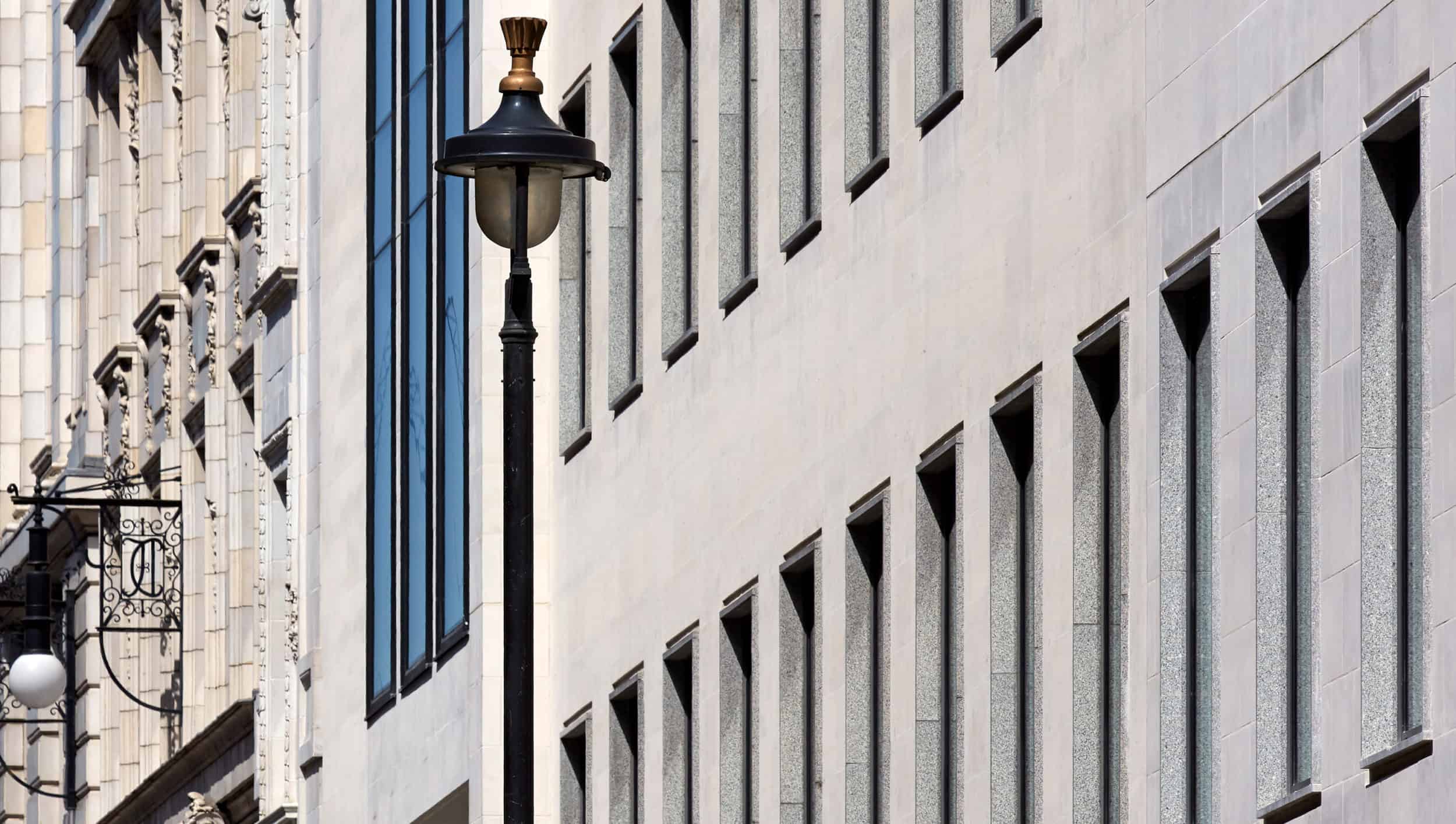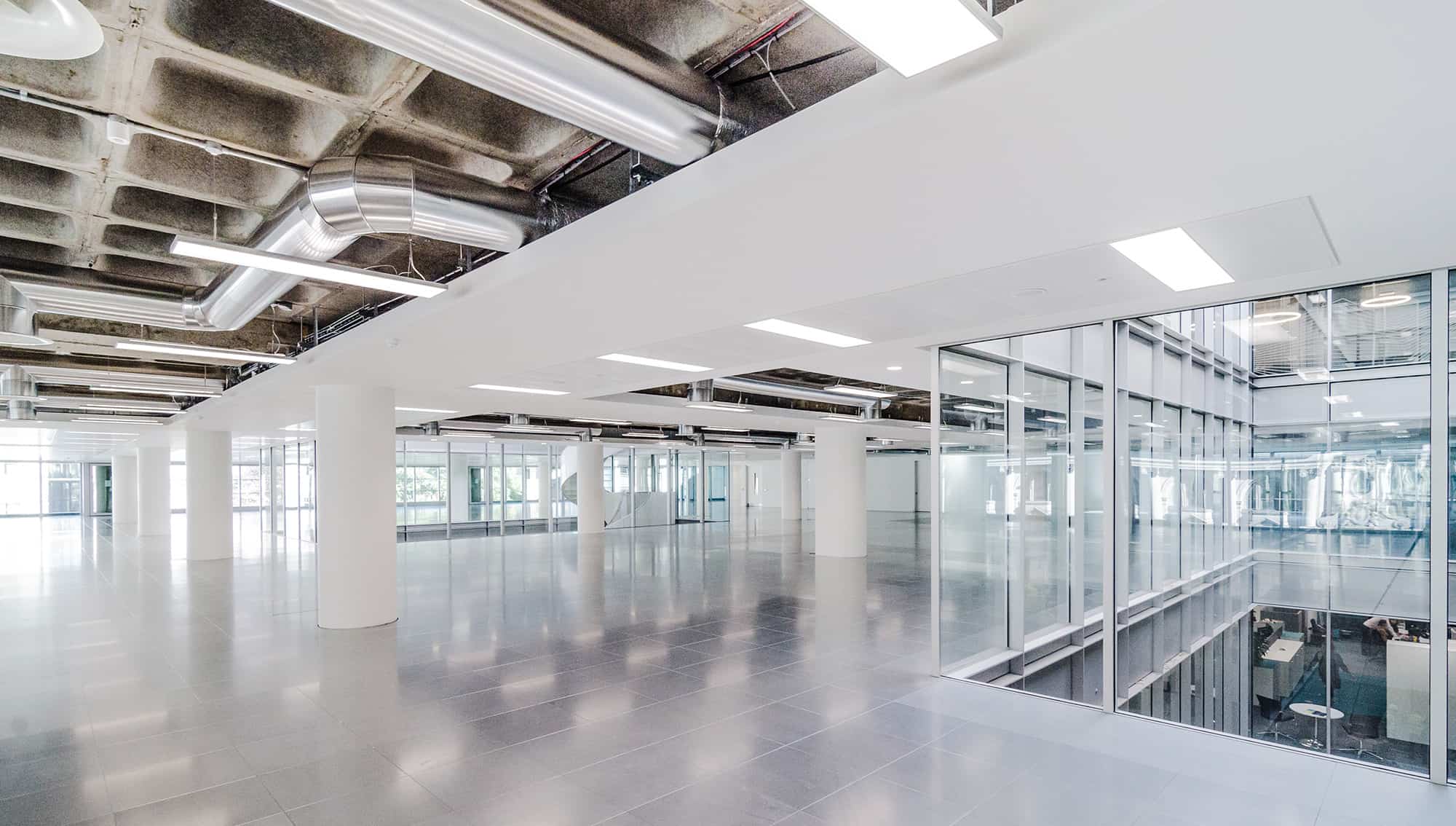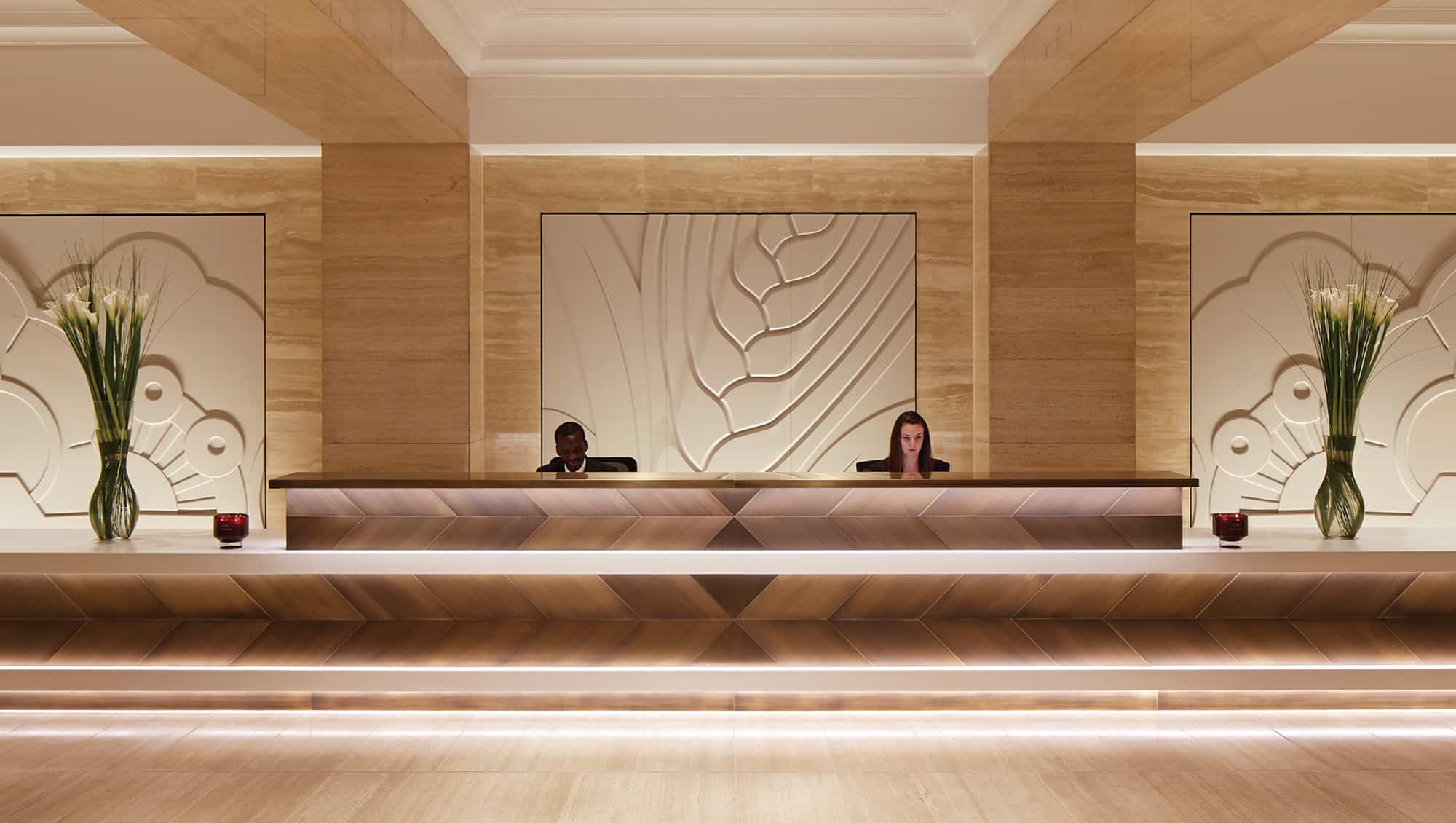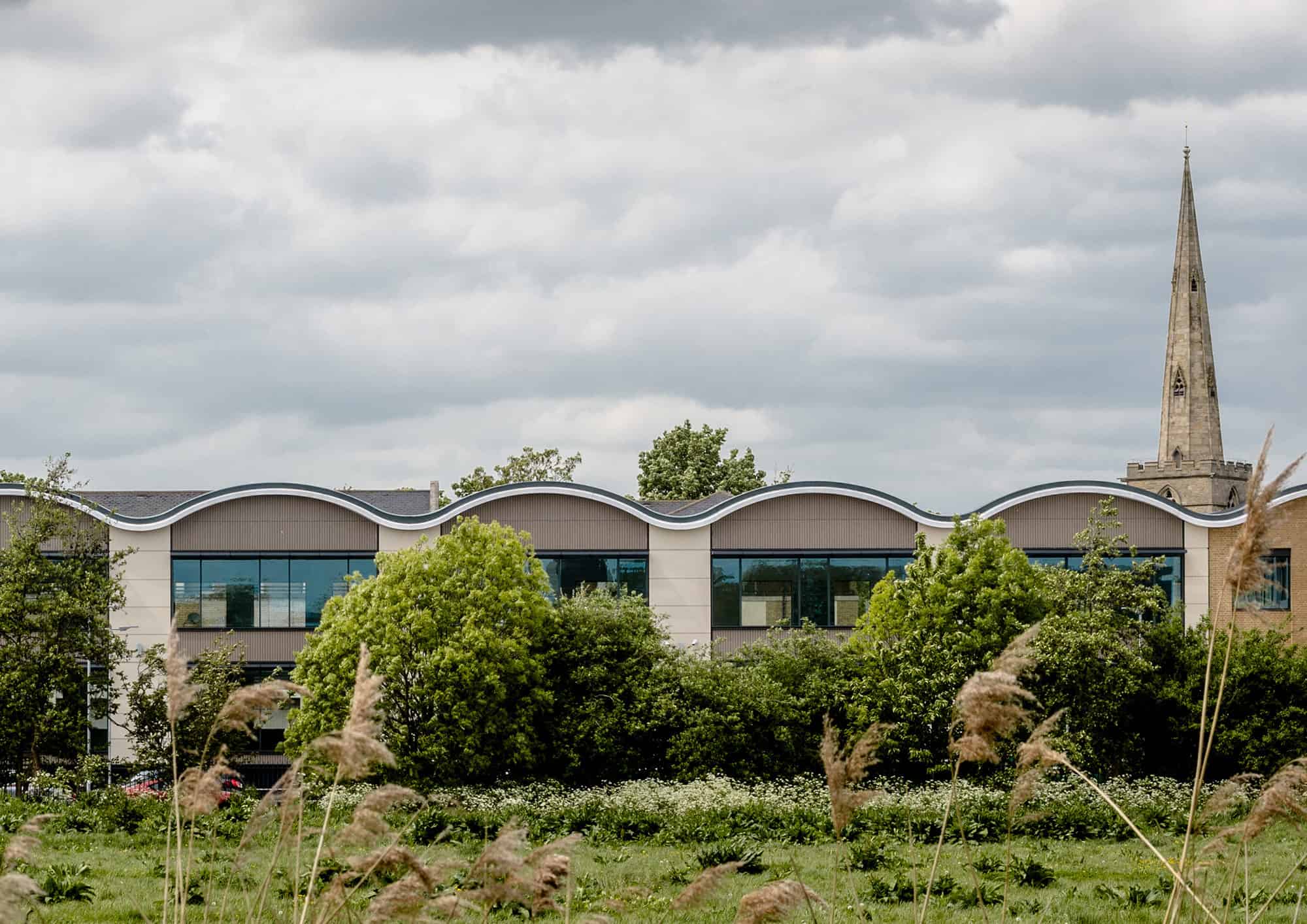City of Westminster, UK
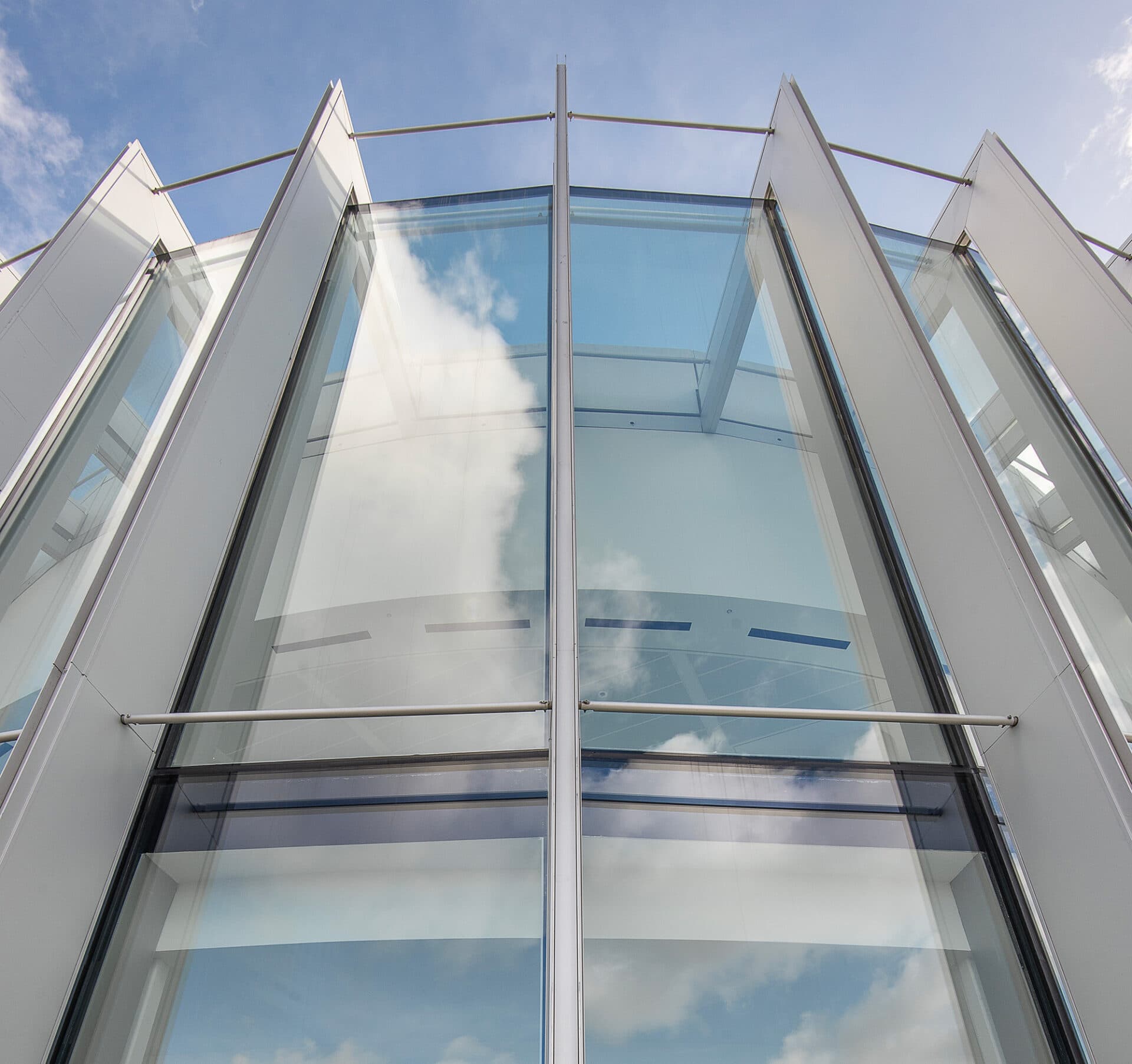
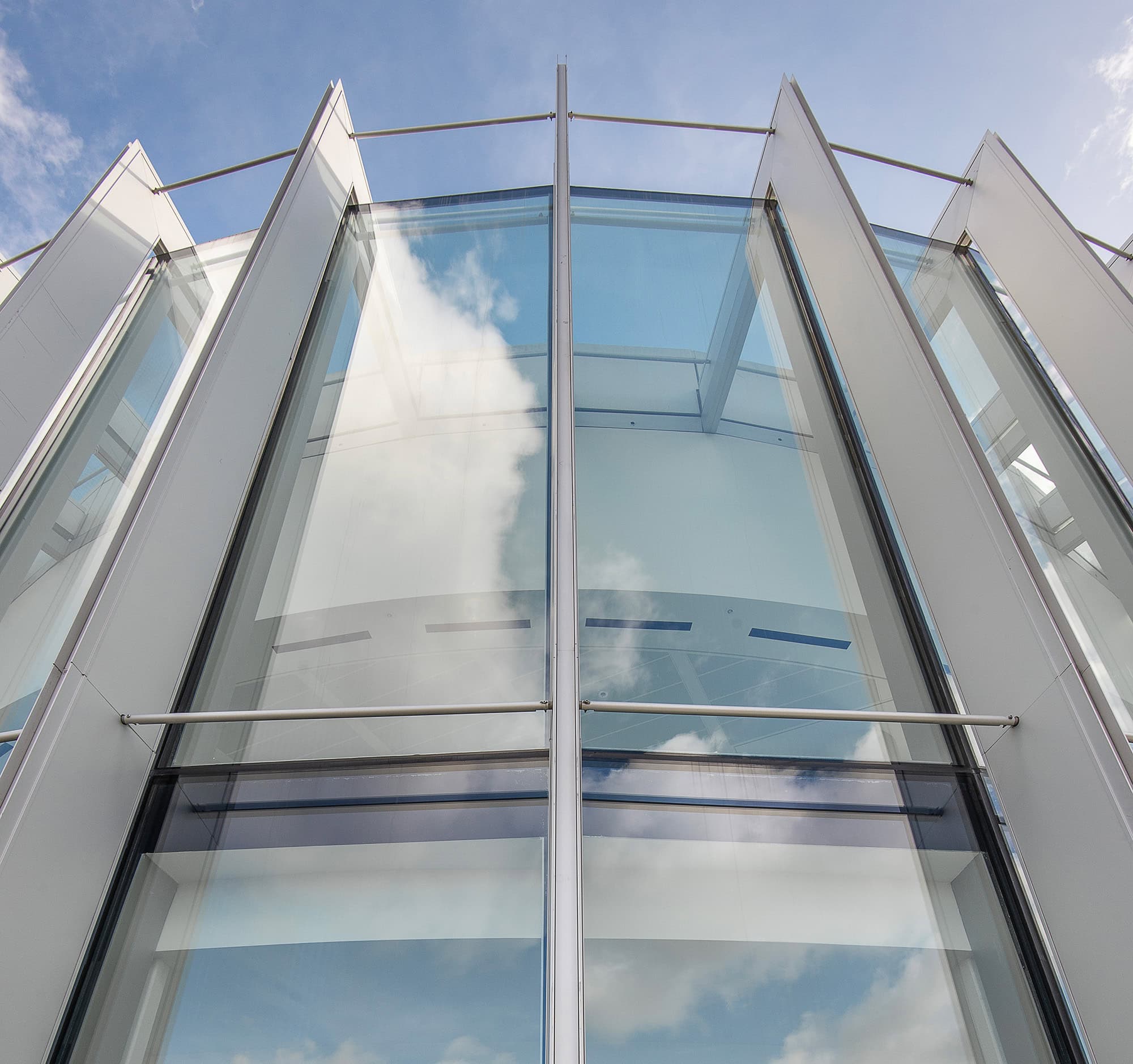
Extension and refurbishment of the Asticus building in St James’s, London SW1 by adding a tenth floor using an innovative structural solution to raise the existing top floor by a storey height, and inserting a new floor underneath
Project Details
Collective Team
The existing building, at 21 Palmer Street adjacent to St James’s Park underground station, was completed in 2006. The circular plan form cleverly enabled a tall building on a constrained site, and the building won critical acclaim and a BCO National Commercial Workplace award in 2007.
We achieved planning permission from the City of Westminster for a new top floor extension in 2019.
The building had seven floors clad in precast concrete with two set-back glazed upper floors with distinctive vertical fins forming an elegant crown to the building.
The extension proposal was to add a new tenth floor and extend the 8th floor laterally, to maintain the existing composition but one floor up. The approval was conditional on this and that the existing materials and design would be replicated.
An innovative structural solution was used for the vertical extension of the building. As the existing top floor and setback plant enclosure above were to remain the same, a conventional demolition of the plant enclosure to rebuild above the new floor would have been disruptive.
Hydraulic jacking process
The alternative pursued was to use hydraulic lifting technology to raise the existing top office floor and plant enclosure above up by a storey height, and then construct the new floor underneath.
The timelapse video below shows the hydraulic jacking process, taking 10 days to raise the existing floor to its current position.
This form of construction is generally used in bridge or infrastructure engineering, but rarely in building construction. However, in this case, the benefit was avoiding disruptive demolition and reconstruction eight floors up and permitting the retention of the existing structure as well as the external cladding.
Temporary works were installed, then the columns between the 8th and 9th floors were cut, and the floorplates disconnected from the core.
The lifting of the 800-tonne, two-storey load was carried out by twenty synchronised jacks over 10 days. Once completed the new floor was constructed underneath using a bubble deck slab and the jacked floors were reconnected to the core structure.
The existing bespoke curtain walling and shading to the top floors was retained and reused. Precast concrete cladding to the laterally extended 8th floor and the extended core was supplied by the original specialist subcontractor Decomo with the material and detail exactly matching the original as required by the planning consent.
Alongside the extension, building services were entirely renewed with the existing gas boiler and chillers removed and replaced with an all-electric system using roof-mounted air source heat pumps. Office floors and common parts were also refurbished to Cat A level.
The approach to retain embodied carbon and follow circular economy principles with the extension was combined with the efficient new services to achieve a significantly improved EPC of A, BREEAM ‘Excellent’ and WELL Enabled design to meet the client’s ESG requirements
The reception area was also renewed wholesale with new services, finishes, and fittings.
Our design focused on a curving feature wall that leads towards the lifts. This was finished in an array of bronze-coloured angles with feature lighting to the head and base.
This key intervention was punctuated by secondary timber elements, a recessed coffee niche, and a curvaceous cantilevered linear bench with bespoke leather cushions. Loose tables and a variety of seating were provided to allow the space to be used flexibly for waiting, meetings, or events.
A portion of the ceiling was exposed with its curve and a radial array of suspended linear lighting accentuating the drama of the building’s curved form.
High-quality finishes were used in the common areas including a terrazzo feature wall in the WCs and showers with fluted detailing and integrated wall washing lighting and timber accents. Basement showers and locker rooms were fitted out to match the WCs.
Bespoke graphics using a linear vertical motif were used for wayfinding and to add character to the basement cycle store and circulation route.
